#active group in the world and... like.. consists of only elves by nature. etc.) but then some of them anyone can join and it's
Explore tagged Tumblr posts
Text
I know I really only have stuff written out in detail about like.. jhevona, elves, and avirre’thel but.. after trying to make a diagram of all of the species I’ve made so far for Nanyevimi (like to map out species that share ancestors, if groups are related and how far back, etc.) there’s like.... 26...not even counting subspecies or smaller divisions existing within each of the 26 groups
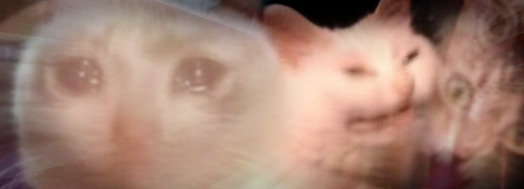
#..... i am never going to be able to write up full information about ALL of them gGHHh#I think instead of making individual info posts about each species I may make like.. on masterpost that just has a SHORT#overview of each one. And then some that I don't have much planned about (like 10 of the 26 are just VAGUELY mentioned#once or twice and I know nothing about them. so in terms of actual fleshes out concepts I have more like 16) I may just do an#'honorable mentions' section where I write maybe 2 sentences about them lmao#I just know if I try to do a full series of posts about every group it's going to take forever. I think it'd be better in terms of quickly#establishing a world to like.. have the ONE overview post that kind of gives a summary of all of them. and THEN from there#if i WANT to.. I can elaborate or add more detail posts about individual species as needed#Kind of like how instead of doing a tiny post on every different type of magic I just made that giant 'How Magic Works' masterpost#and since then I've done a few smaller posts detailing specifics of magic like certain dynamics of magic using souls and etc.#Id' also like to do a masterpost of all groups in Nanyevimi.. like not species but just.. organizations or political organizations#or governments or alliances.. general groups that exist in the world. Kind of like what I detailed in that post with the wax seals#where I designed a symbol for a few different groups. Which sometimes those fall along species lines (like 'The Elven Alliance' is an#active group in the world and... like.. consists of only elves by nature. etc.) but then some of them anyone can join and it's#more vague. like a group of professional bandits or a coalition of mages from all over the place. etc.#Since.. unsuprisingly I think I have like at least 20 of those as well. And I think it'd be helpful to have a broad general masterpost#of them and then only elaborate in separate posts if necessary. This way things are established faster and easier to keep track of#honestly even sometimes I myself am like 'wait... what was that group again?? are these people related to these people? who is that??' hjghj#Anyway.. maybe masterpost is the better route. part of why I don't have much out here about elves is because I was putting them off#until I finished all 10 posts I had planned about avirre'thel. I have TONS planned about them I just don't have it out and posted#anywhere. So maybe one or two world establishing masterposts like that could help speed that up so at least#there's SOMETHING out there about everyone even if it's not very detailed. rather than constantly making vague references to all these#groups yet having no further info about them anywhere lol.. ANYWAY... even if it's technically more like 16-ish since those are the most#established ones.. 16 is still a lot...#*me continuing to ignore everything else and just make more posts about how jhevona are cool* I Am Looking Away.. I Donot See It..#as always.. shout out to the like.. 3-5 of you who are also into worldbuilding and actually read all my nonsense posts about it.. True Squad
7 notes
·
View notes
Photo
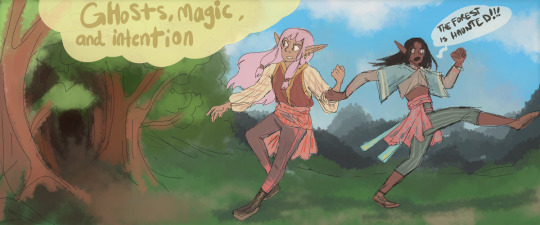
Just a short info post on the topic of people accidentally haunting themselves through use of magic, and what is usually done when people believe they’re being haunted. Completely random topic in the middle of things I’d rather be focusing on (the avirre’thel, elven history, etc.), but... apparently my brain was thinking about this so I had to write some about it lol
(actual info under read more, as usual..)
---------
[[ ALSO: there’s still a glitch where when viewing blogs on the side on tumblr, read more’s don’t work and it shows the full text, so I’m sorry if this appears full length. If this happens just view my blog in a new tab or something instead so there’s not long strings of text... lov tumblr being a very functional website..]]
Technically, there's no such thing as ‘spirits’ in Nanyevimi (at least not in the way we usually think of them). There are a few things that may mimic the presentation of something like a haunting, a spirit sighting, etc., (which I’m about to explain), but these are magical in nature, rather than just an actual function of the world.
The most common phenomena that can mimic the presence of some sort of ghosts, is... essentially, people haunting themselves??? As in any world, people in Nanyevimi are still capable of convincing themselves something is true through confirmation bias based on their preexisting beliefs. Which, when much of the population consists of magic users.. can become a bit more complicated, as they do actually have the potential to unknowingly effect their surroundings.
Essentially, anyone who's capable of using magic, even if they don't have very strong abilities (actually, especially if they don’t/are relatively untrained), can end up performing small feats of magic accidentally. This is why latent magic can be so dangerous (as explained in this post on latent/undiscovered magical abilities HERE (link)), and why especially the more powerful you are, the more significant it is to be exceptionally well controlled, lest you accidentally blow up your house or kill someone lol..
So, if it's something believed by a large group of people, all of whom can use magic (such as a small rural town of elves), it can almost end up becoming a self-fulfilling prophecy.. A myth starts, then people begin to fulfill the myth (unknowingly) through VERY small energy barely noticeable accidental acts of magic. For example, a mysterious breeze coursing through the forest on a day where it otherwise wasn't windy, and people are like “AAAa! See! The forest is haunted!!”, when really it was one of them which caused the breeze to happen in the first place lol. Which only makes more people believe and do the same thing.
Collective energy output like this can sometimes end up functioning similarly to an enchantment, without an actual enchantment having been placed by anyone, where the more collective belief and accidental magic bestowed into something, the more that that thing actually follows through, in a series of tiny acts over time that just gets worse the more that people buy into it*(1).
So for example, there may be woods that are thought to be 'cursed', where bad things always happen to the people who travel through there, but rather than it being the doing of some evil ancient monster (like the locals believe), it's actually just.. literally the people who live near the forest themselves. The small bits of accidental magic seeping from them act to confirm their intentions, and cause little accidents like a branch falling on someone, someone's hat blowing off, a pothole in the road that knocks someone's wheel off their cart, etc. While it wouldn't really be anything extreme*(2) (crafting actual apparitions, monsters, natural disasters or etc. would take far more advanced magic than what could just happen without the person knowing they’re doing it), these small things would still be enough to reconfirm the myth over time.
(for more info on how magic, enchantments, etc. works, you can read the large masterpost sort of thing about it HERE (link))
Interestingly, you rarely if ever see this effect of “self-haunting” occur in mostly Jhevona populated areas. This is thought to be because of their cultural focus on extreme self-control and awareness of their magic, thus making it much less likely for them to unintentionally use magic. For someone so deeply in tune with their internal intentions and awareness of their magic, accidentally using magic without knowing it would be exceedingly rare. (Though in cases where this has happened, the effect is usually much more extreme, since they're capable of far more advanced magics... which is part of why they prevent this stuff from occurring in the first place. ).
These self-hauntings also never occur in non-magical societies, and you actually rarely have stories about “ghosts” or curses or etc. in their cultures. Human (and other non-magic) cultures in the realm certainly can also fall prey to psyching themselves into things and etc., so it's not like because they can't do magic they're suddenly immune to superstition, they have plenty of similar-ish beliefs, but it's just much less prevalent for it to be genuinely reinforced in their cultures, since they usually can't find much tangible evidence. Like, if they believe something like a curse, it's usually just based on "a feeling" they get, or based in it just being a tradition that is passed down. They culturally would describe it more as a sort of ‘energy’ instead.
So, humans/non-magical people in the realm may have beliefs more like “Stay away from the woods because they have a repellent force, and they don’t want us near them/the gods don’t intend for us to go into them/we’ve hurt the forest’s feelings and are not allowed there now”, and would also not have much evidence for this aside from maybe a few personal stories or “gut feelings”. While among magical groups, it may be described more as “There is an evil ghost haunting these woods!/Someone has cursed these woods!”, and they MAY actually have have physical evidence of it existing/something that seems like tangible proof rather than just suspicion (despite it still usually just being an accidental magic placebo). Beliefs like this can stick around in certain magical cultures more prominently , because they're not as easy to discount or disprove if locals have apparently witnessed actual physical evidence of it, etc. Because it feels stronger and more personal to them, they also usually attribute it to ghosts/spirits (sometimes of ancestors), or more active/deliberate and personified parties, rather than just obscure feelings or the vague workings of gods.
There's no real solution to people haunting themselves, other than for the group to learn what's going on and ALSO learn better magical control and discipline so it's less likely for them to cast accidental spells. If they ONLY learn what could be going on, but don't train their magic, they'll just end up repeating the same thing later, falling back into haunting themselves, since they still have underlying issues with accidental spells.
Due to their generally higher mastery of magic, sometimes Jhevona (if there are any groups of them in the local area) will be called to help with stuff like this. Kind of like teams of paranormal investigators, except they're just magic specialists who may come in and help test for traces of magic in an area (to see if people are casting spells accidentally or not), better train the people in the area in their magical control, etc. If the Jhevona is powerful enough in enchantment magics, sometimes they can even kind of just slap a band-aid on the issue by simply overriding whatever magic is being done with a larger enchantment which then blocks the accidental magic from coming through, effectively ending the self inflicted "curse" in the area, though it’s not a very long term solution, and people may end up haunting themselves again in other ways.
(Though sometimes an over-riding sort of enchantment can be done to help diagnose the issue, like if they do this and the “haunting” DOESN'T go away then.. you may have some more serious problem on your hands, like a mage causing trouble intentionally, or etc.)
There are a few other things which can, on the surface, resemble a form of ‘haunting’.. Mostly just, enchantments done by malicious parties (actual people though, not ghosts.. just like.. random mages who want to trick people in a small town out of their money or something), and also occasionally forms of soul magic gone wrong can trap someone’s soul in an object or place in an unnatural way, and this can mimic the existence of ‘’spirits’’ or etc., though this one is very rare, since soul magic in general is pretty rare. I may elaborate more on those two options later, but this post was mostly about self inflicted “haunting” through accidental magic lol.
[ *(1) note: Magic scholars disagree on whether enough collective belief in something can ACTUALLY create an enchantment without an enchantment being set. All magic seems to based on intention, but especially enchantments are extremely literal in that sense, so it could follow that if enough people intend something, and enough people are accidentally seeping magic into that intention and giving it an actual energy behind it, it may genuinely become it’s own ‘independent magical function’ (what enchantments basically are), “feeding” itself (as all enchantments must be recharged over time) on the magical energy output of the collective group.
But, it’s commonly thought (and observed) that enchantments must be specifically set by one individual (though that individual can draw energy from others as part of it), and that they also take a great deal of magical energy to set up (which is why it’s mostly Jhevona and other higher-energy magical species who do them, rather than lower energy beings like elves). Whether a collective group of people could create a genuine enchantment function just by casting enough intention and fueling it with accidental magical leaks is still uncertain, but would definitely be interesting from a magical study point (and would confirm some less common beliefs that magic to a degree operates on it’s own.. since this would effectively be like.. an enchantment casting itself just because there was enough intention and energy going around. But, that’s a debate for the magic scholars (who already spend most of their time arguing about this stuff anyway lol).]
[ *(2) note: It should be noted that this ‘unintentional magic’ really only manifests through minor physical alterations of the environment, or other very small simple spells. Things like Illusion magics and etc. are so powerful and inaccessible that it's not like someone could just 'accidentally' do them, even if casting illusions or hearing voices would go along with the idea of placebo hauntings. Though in some ways magic can seem like it has a mind of it’s own and is never fully controllable, there are still plenty of user based limitations.
Much of magic is intention based, meaning it is affected by your mental state. If you try to cast a spell to burn your house down, but you don’t really actually want to burn your house down, you will have mental resistance (unless you’re immaculately well trained) and the spell will probably not actually work. You'd end up casting the fire somewhere else and burning a random stranger to death or just shooting water at your house or something instead, etc.
Which of course, this means that SOME things can be done on intention alone.. but these primarily involve pure energy magic, or simplistic elemental magic. Some basic magics like these can be utilized (to a primitive degree) without training or much knowledge, since they mostly consist of pure bursts of unaltered energy, rather than a careful manipulation of energy or matter. Most higher level magics are too complex and require a lot of very intentional manipulation based on former knowledge, so it'd be nearly impossible for someone to do them just 'accidentally' .
Unintentional magic usually exists solely in the form of like, accidentally creating a breeze, or moving an object, shooting out a burst of energy at someone who has attacked you even if you didn't MEAN to hurt them and it was just an accidental self defense out of your body being surprised (also why they say to never sneak up on mages lol), accidentally setting a fire, etc.
Anyway, I just wanted to clarify that it'd be impossible for someone to 'accidentally' perform some feat of magic that they're not trained for/otherwise incapable of.
If you're ALREADY an illusion magics user, you could accidentally use illusion magics perhaps under certain specific conditions, but if you're just some random elf with very little magical training who's convincing themselves of a placebo haunting, you're not going to be able to break out some master level illusions spell if you can't already do that normally, etc. “Weak” accidental magic can still cause massive damage, kill yourself and people around you, destroy your environment, etc. even with just simple pure energy magics, so like.. it’s still Dangerous, and unintentional magic can operate in pretty hazardous ways, but , you’re also just not going to be able to accidentally do stuff that’s WAY beyond your scope to already reasonably be able to do. ]]
#worldbuilding#also I mean I guess is an important thing to establish about the world#though I think.. I may have mentioned spirits or something in the world before.. as usual.. I have a lot of information I'm working#out so a general rule is whatever is the MOSt recent is also the most accurate.. maybe 4 years ago I had some ghost OC or something#but this is the official consensus now lol#ghgh also I love all the sketchy super quick art that I do.. not like from an This Is Good perspective but in the sense that they're all#humorous to me like.. I truly just sat down at the computer with 0 knowledge of anatomy completely freestyling what a leg looks like#and it shows hghgjh#which is completely my fault because I do not use references.. like it was actually bizzare to me to discover that most artists in practice#will like look up references before drawing and have anatomy ref or something in another tab which they reference as they draws#or etc. like HHgh... I just plop out whatever bizzare anatomical concepts exist in my head until it seems 'good enough' and leave it at that#everything I have ever drawn I have never used a reference for.. which is why.... I am Not Great at certain things#but I still always forget it's like one of those things where I always thing 'huh! if I actually want to get better at anatomy#I should start using references when I draw!!!' *completely just does not use references the next time I sit down to draw*#*looks at art ad wonders why I'm not satisfied with it* 'hmm I should start using references!!' *completely forgets ..#my brain is just like 'hmm I think i will cause problems for myself on purpose'#i have no place to complain since I do it to myself by not practicing with references.. but alas
10 notes
·
View notes
Photo
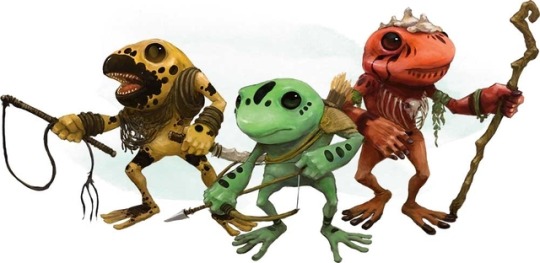
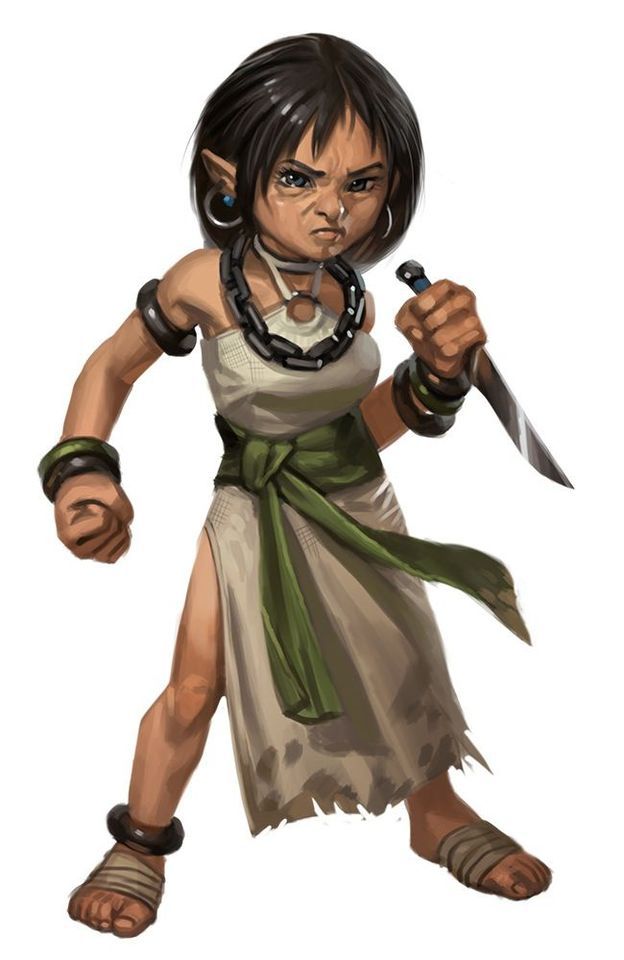
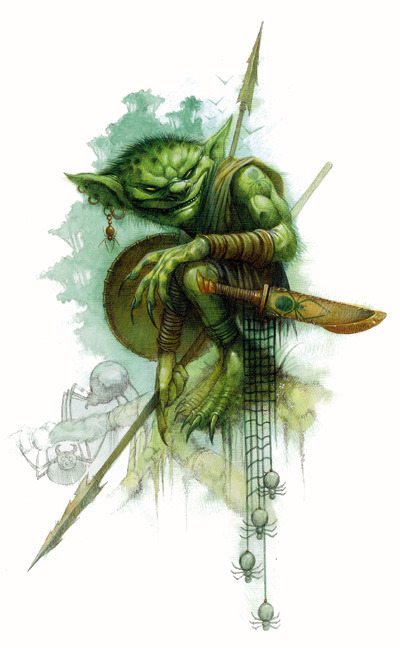
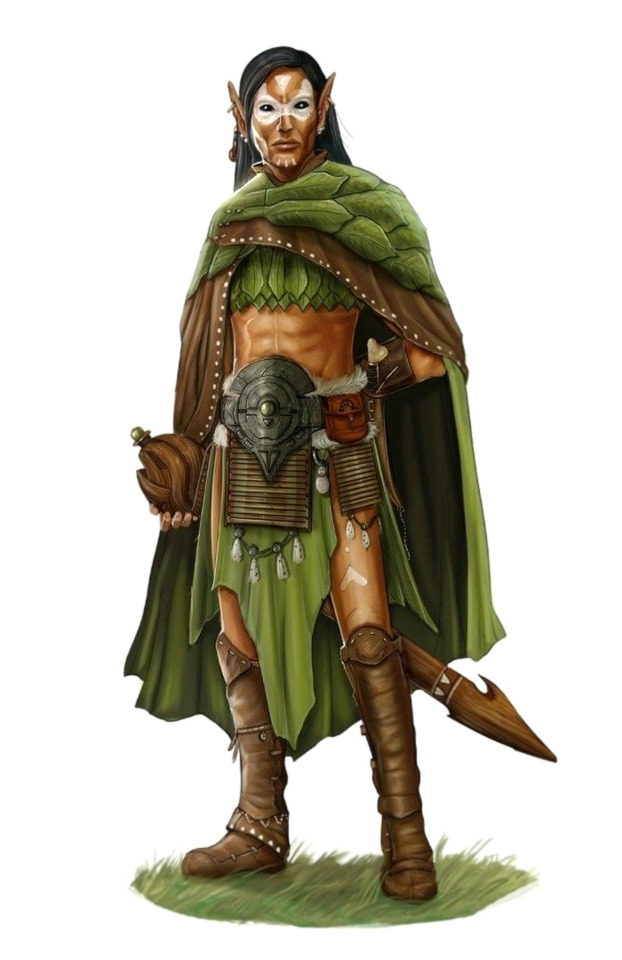

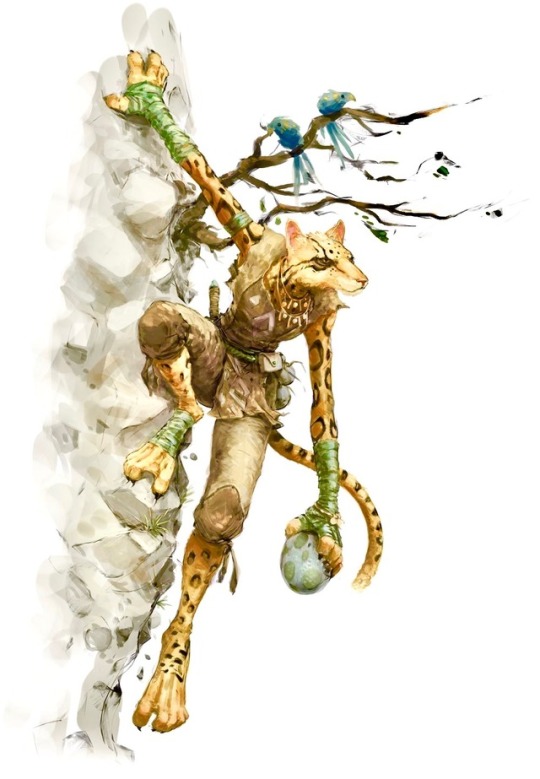
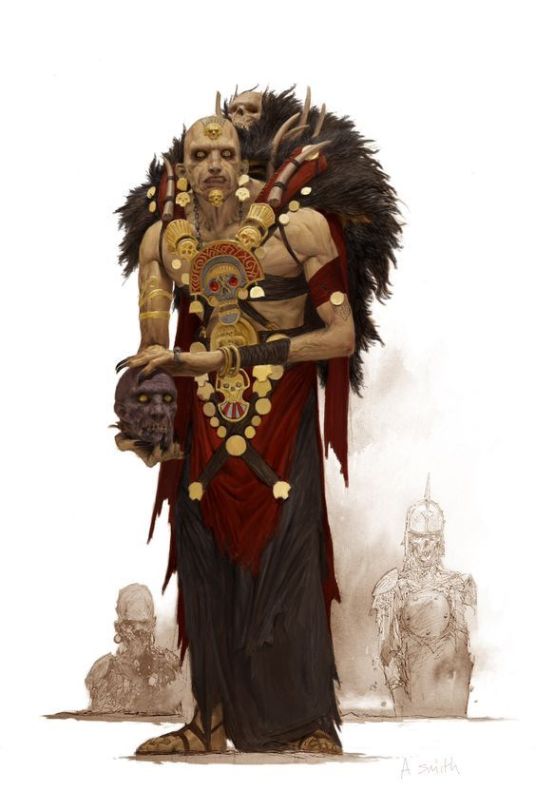
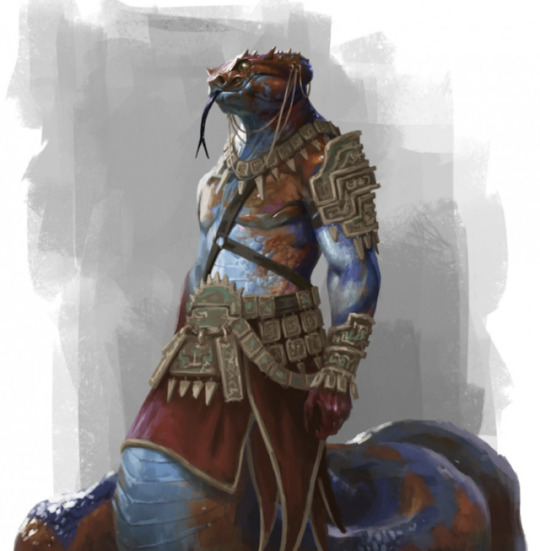
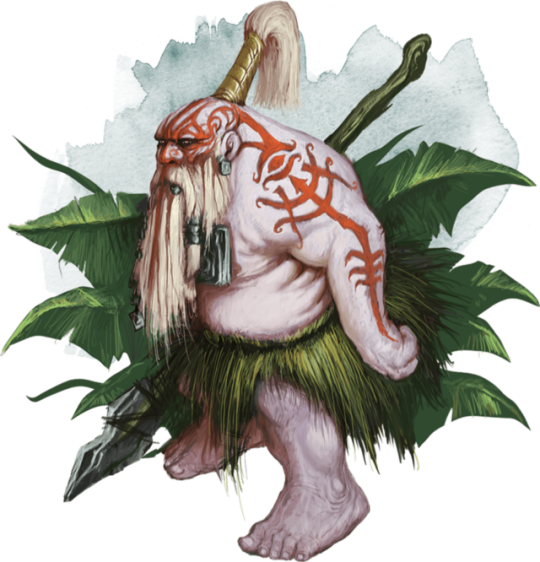
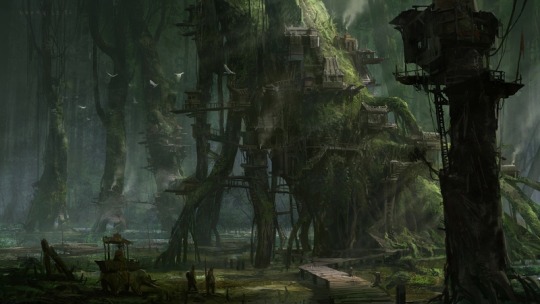
THE JUNGLE
Detailed descriptions under the cut.
If you decide to use these or other Jungle races for an OC/campaign, feel free to @ this blog and I will be happy to advertise your work!
GRUNG: -2 Strength, +2 Dexterity, +2 Constitution, Poison Immunity, Amphibious, Poisonous Skin, Standing Leap, Grung Poison.
Official Description:
Grung are poisonous frog-like amphibious humanoids that live in trees. Their society is organized in castes determined by each grung's color.
Grung prefer to live in shady areas, and need to remain in constant proximity to water. Their tadpoles develop in ground pools, already separated by caste. All grung continuously secrete a poisonous substance that is harmless to them.
In addition to their naturally poisonous nature, grung also poison their weapons. Each color of grung poison causes a different ailment in their victims.
Grung society has a rigid caste system, and each grung's place is determined by its color:
Green: Warriors, hunters, and general laborers.
Blue: Artisans and domestic workers.
Purple: Supervisors of the green and blue grung.
Red: Scholars and magic users. Also known as grung wildlings, they are superior to purple, green and blue castes. Respected even by higher castes.
Orange: Elite warriors, with authority over all lesser grung.
Gold: Also elite warriors, with the highest leadership positions. Every tribe leader is a gold grung.
Some mobility is possible between the castes in cases of valuable contributions and great deeds by the use of ritual magic and herbal compounds.
Grung tribes also make extensive use of slavery, and are always looking for new creatures to enslave. They keep their slaves at bay by poisoning their food in order to inflict lethargy on them. Over extended periods of time, the effects of such poisoning can only be removed by magic.
Personal Commentary:
First, just to show some creative possibility with that color system...



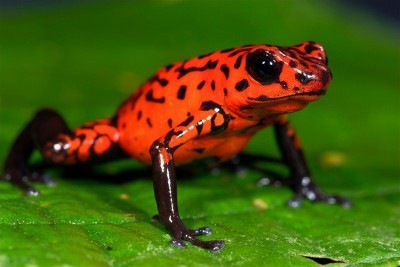
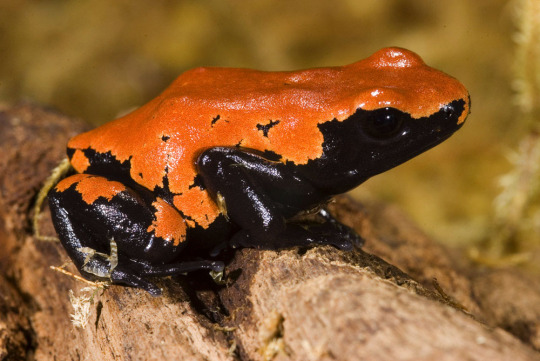
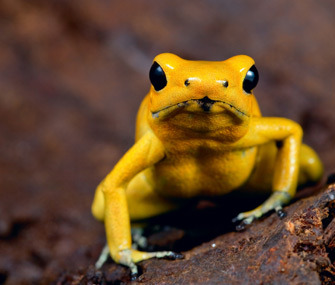
We have the frogs for the job.
It sounds like this is a highly rigid, collectivist, authoritarian society. Isolationist in the sense that if you are not a grung you are not welcome in any role other than slave, very self-contained and very ordered. I don’t think it’s necessary to have grung “always looking for new creatures to enslave” because it sounds like again, they have a very structured system at work. Slaves equal a higher drain on resources whether it’s food, water, poison, shelter, medicine, whatever. Also, procuring slaves in the first place can be risky, and the more poison needs to be expelled controlling slaves the less efficient those slaves will be. So my suspicion is that while it would be common, slaves would be employed in specific grunt positions that wouldn’t be compromised by mental or physical lethargy. These positions would also be carefully monitored and not exceed the quantity required to avoid excess expense.
On top of that though, there’s the question of environment. As an amphibious race, the grung could potentially have architectural structures above and below water. Slaves would most likely be restricted to above water. Grung are referenced as having tribes, as if they might be nomadic, but if they know they have a consistent water supply capable of sustaining a large, rigid population, slaves, and nursery for tadpoles, it makes sense that they would be stationary and build defenses. Also frogs do weird stuff with mucus, underwater architecture and even above ground architecture could get really fun and unusual.
HALFLING: +2 Dexterity, Lucky, Brave, Halfling Nimbleness.
Official Description:
Wild halflings tend to be lean, with black hair and dark eyes. They live in small tribes in the jungles, separate from native humans. They have a primitive hunter-gatherer society and each tribe is ruled by a chief, who made decisions alone. They also practice polygamy, with males being free to have as many wives as they can comfortably support. A male can challenge another male for a female. Each village is completely self-sufficient, and the halflings have no use for trade. Their tendency to kill humans they find in their territory means that they rarely have visitors.
Wild halflings make a unique, paralyzing poison called kurari which they use on their arrows for hunting and fighting. In addition, they use knives to dispatch prey and to defend themselves.
They also have a number of superstitions, mostly concerning the intermixing of adult males and married females, and each tribe reveres a talisman. This talisman influences how they sacrifice people, something they do with any human caught in their territory. For instance, a tribe with a jaguar lord as their talisman will keep the creature in a pit in their village with sacrifices deposited there during an appropriate ceremony.
Personal Commentary:
No beating around the bush, the original blurb/concept is pretty racist. It’s also not the only one. “People who live in jungle climates are wild, stupid savages” is an unfortunately common trend for this setting. Ultimately though, the idea of jungle races being less civilized and doing things for no reason is just not gonna cut it with worldbuilding. Forget the tumblr outrage culture for a minute, the idea just plain doesn’t reflect reality and isn’t relatable. But that’s why homebrew exists.
For a hypothetical jungle-default campaign, I’m mainly drawing influence from civilizations in Mexico/Central America. This is partly because it seems like there were attempts to evoke the Mayans and the Aztecs, partly because tabaxi being “jaguar men” points to new world stuff. This is still DnD though, so of course artistic license historical influence is par for the course. IMO there should just be at least some knowledge of and respect towards source material before making changes, however.
As a rule of thumb, when it comes to cultural influence in fantasy I'd argue everyone should be equally default (normal to those living within a given culture), equally exotic (foreign, strange, barbaric, confusing, curious, etc. to outsiders), or even both simultaneously for the same groups. I’d also argue that using dead civilizations (ex. Ancient Egypt) is safer than using ones that still exist. If you’re going to draw from contemporary groups, it’s worthwhile to see if there’s precedent for members of that group telling fantasy stories using the same things you’re looking to tell stories about. Also, try to make sure you’re not trivializing anything sacred! If it’s commercial, dead, or has been used already in a similar way you’re probably alright. After that there’s more risk involved and you’ll need to tread lightly.
ANYWAY, back to halflings.
It’s important that halflings in this setting do not comprise a major civilization, but exist more in scattered villages. These villages are stationary both due to the presence of pits, the importance of familiar surroundings to keeping intruders at bay, and the utilization of agriculture. Halflings are not going to be mainly Mayan or Aztec inspired because they aren’t influential enough, and further it doesn’t make sense for them to be practicing human sacrifice given their small population size. Sacrificing certain animals or setting aside a portion of harvests as offerings would be fine, but in communities like this you need those numbers.
Additionally, I remember a researcher mentioning that for the Mayans in particular there was a HUGE body count just in terms of living in a jungle setting. That came from deaths in childbirth, deaths pre-sex, deaths post-childbirth, infant mortality, deaths from disease, deaths from fashionably reshaped skulls, deaths from warfare... when there is so much death happening on a routine basis, implementing some rigid cultural structure is a way of navigating that. It might mean using a calendar to decide when to conceive for instance, since giving birth the wrong time of year could spell certain doom. It might also mean ensuring maximum efficiency among surviving members of society.
So halflings having low populations, it doesn’t make sense for them to do human sacrifice OR to be completely opposed to all trade. They might want to stay hidden if there’s concern they could be subjugated by local civilizations, but they’re not going to want to antagonize those civilizations by actively seeking foreign sacrifices either. If they can co-exist peacefully with a group that might contribute technology and resources, that’s good for them. Therefore I’d argue jungle halflings are more likely to kill intruders if they can hide the bodies/make it look like an accident, but they’d prefer not to kill and just stay under the radar since it’s less risky. They would probably have alliances with other cultures provided those cultures won’t prey on them. Tabaxi, elves, tasloi, and aarakocra would all probably be okay for that while humans, dwarves, grung, trolls, and yuan-ti are more likely to be kept at arm’s length.
Polygamy in native Central American populations seems to have been practiced only among nobility (for Mayans and Aztecs), which makes sense since being able to support that many partners would be a mark of status and financial success. In small, isolated halfling villages it doesn’t make sense that there would be enough resources for that lifestyle so IMO that element can be completely scrapped. Strict gender roles could be practiced among halflings not so much to reduce opportunity or look down on either sex, but because low population and environmentally-posed obstacles + time needed to bear/rear kids has precedent. Women would probably be in charge of maintaining the home, rearing children, medicine, some crafts, and finances while men would be in charge of obtaining food/water, defending the village, some crafts, and negotiations with outsiders. Probably divergence from traditional roles would only be accepted so far as the exceptions were being productive members of the community, and there would likely be higher scrutiny tied to that.
A chief making decisions alone seems like it could go really bad if the chief doesn’t know what he’s talking about, especially in a tiny community. Makes more sense to me that the chief and their partner (if existent) would maintain leadership roles together with the chief having final say, but the head of each family in the village could hold counsel with the chief.
Men being able to challenge other men for women seems like it should be scrapped because that’s just going to cause fights and instability, which would in turn raise body count. Poison and knives make sense and can stay, talismans should only be called talismans if they are material, constructed objects. If they’re living animals the name should be different to avoid confusion, and there should be people within the village whose job it is to take care of those animals. Those same people would also be charged with making sure the village is safe with their animal and vice versa. If the talisman is an actual talisman, I’d argue in favor of it being an enchanted item with varying levels of power.
Physical traits with lean frames plus dark hair and eyes is fine! Clothing I tried researching some but couldn’t find non-Aztec/Mayan dress that I was confident recommending for influence, so I’d say probably drawing influence from Aztec commoner clothes for day-to-day activity is safe. This would mean...
“Men [...] mostly wore a loincloth. Made from a single long strip of fabric that was then tied in front, the loincloth might be the only thing that a man wore.
A man with a plain loincloth would be of fairly low rank, or even called a slave, but a man with a higher rank might have decorative fringe on his loincloth. A man might also wear a kind of triangular cloak, known as the tilma or the tilman.”
Women, meanwhile, wore things like this:
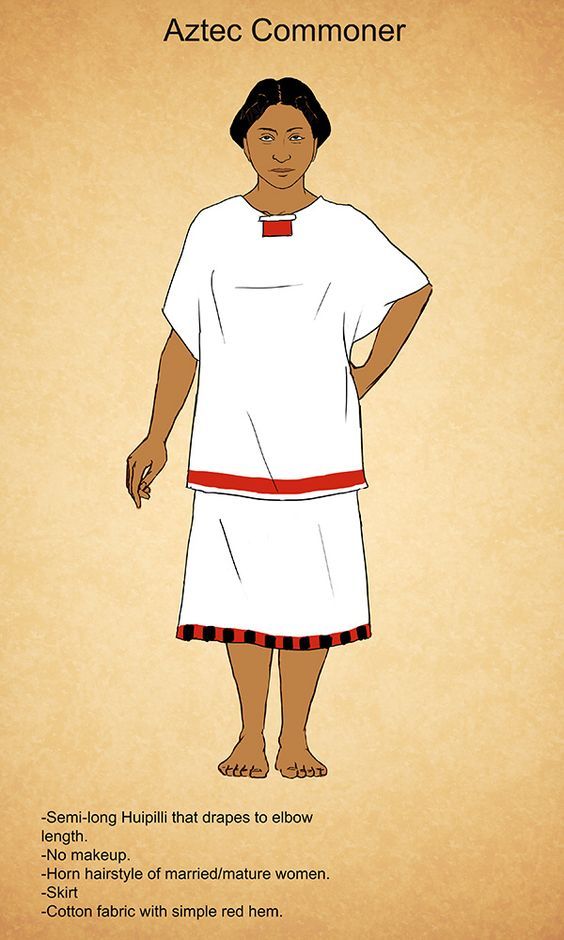
But as I said, there’s some sweet artistic license with fantasy/DnD. None of these things are rules so much as useful jumping points.
TASLOI: -2 Strength, +2 Dexterity, -2 Charisma, Small size, +1 Bonus on Attack rolls, +4 Bonus on Hide checks, -4 Penalty on Grapple checks, Climb Speed 20ft, +4 Racial Bonus on Hide and Move Silently checks, in Thickly Forested areas Hide Bonus increases to +8, +8 Racial Bonus on Climb checks, can always choose to take 10 on Climb checks, Darkvision, Low-Light Vision, Light Sensitivity, Nimble Escape.
Official Description:
Tasloi are humanoid jungle-dwellers whose race is thought to be thousands of years old. While very quick and nimble between the trees, tasloi are easily dazzled in bright sunlight and prefer to stay below the jungle canopy. Despite this, tasloi do possess low-light vision. They speak their own language, but some also speak Common or Sylvan.
Tasloi are 3-feet tall with gold, cat-like eyes; their green skin is thinly covered in coarse, black hair. They have a stooped, crouching posture and their knuckles drag on the ground when they walk.
Tasloi live in small groups consisting of several families. Their lairs are usually a series of large trees interconnected by vines and ropes, constructed on platforms high in the jungle canopy. Each tree sports platforms, 50-100 feet above the ground, upon which the tasloi live. Some tasloi work and live on the ground, along with the village's livestock. They raise dire rats or spider eaters as beasts of burden and mounts. The rats are kept as pets and used to aid in construction, maintenance, and protection of the community. Medium dire rats are used as mounts. If the village does have any spider eaters, those beasts were reserved as steeds for the most powerful tasloi in the settlement.
Tasloi normally attack from above, dropping from the treetops onto unwary opponents. If they manage to gain surprise, they use nets to ensnare adversaries, otherwise attacking with their short swords and javelins. They always use hit-and-run tactics in order to wear down tough foes, thus avoiding any stand-up fights. Tasloi always try to abscond with slain bodies, thus saving food for the group.
Often they can be heard at night, speaking in their high, whispery voices.
Personal Commentary:
When creatures use knuckles while moving as their default, it comes at a cost to dexterity. Our ancestors becoming bipedal was a huge deal in terms of evolution because it left our hands free for other things, like making and holding tools/weapons with greater skill and mobility. If you look up human beings who walk on all fours for medical reasons or even just look at great apes, it’s clear that there are costs to quadripedal movement.
If the goal is that Tasloi be extremely good at climbing, I’d say drawing inspiration from the spider monkey is probably a good way to go.
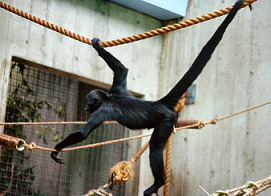
Arms can be proportionally longer than human arms without being equally long/muscled compared to legs. A very long and muscular tail acting as an extra limb for climbing would be a huge advantage, and you could do an experimental foot shape to continue buffing dexterity without losing balance.
Tasloi can definitely craft tools and weapons. It’s also explicit that they make nets, so most likely textiles are part of their culture as well as well. Tasloi aren’t stupid. If eating other humanoid races is a thing at all, I’d imagine it wouldn’t be a main food source. Even if there’s not taboo, cannibalism has health hazards. Feeding corpses to livestock is a different story though.
All this said, there are some cool opportunities to really experiment with architecture and art given this is a hyper-dextrous, arboreal race. It sounds like there might be a caste system with different levels of living off the ground for different tasloi according to job. It also sounds like tight family bonds are important and history is important, given there is an understanding of the race’s age. There might be room for ancestor veneration here.
ELF: +2 Dexterity, Darkvision, Keen Senses, Fey Ancestry, Trance.
Official Description:
Wild elves have darker skin than other elven subraces, in a range of light to dark brown. An average male is 5'8" (173 cm) in height and weighs 150 lbs (68 kg), while an average female is 5'3" (160 cm) and 130 lbs (60 kg). Their hair can be anywhere from black to light brown, and it grays then turns to white with old age. They prefer to wear as little clothing as possible and choose instead to adorn themselves with other decorations like tattoos, feathers or body paint. They can make and wear complicated and intricate beadwork. Males are usually larger than females, sometimes by as much as five inches or twenty pounds, but wild elves differ little in size from other elves.
Wild elves, like other elves, are nimble and agile in body, but they are commonly thought of as less intelligent than their elven brethren due in part to their aversion to civilization.
Wild elves are a quiet, withdrawn people who neither like outsiders nor tolerate any offense to their person. In some ways, wild elves are very savage and they are quick to violence if provoked. Few things are more dangerous in the wilderness than a vengeful band of wild elves with ill intent. However, wild elves are not wholly uncouth and most would rather let trespassers go freely than harm them, so long as they learn nothing that could be used against the tribe; those who do are usually wiped of their memories rather than killed. Wild elves are also trustworthy and loyal friends who, though so slow to trust that short-lived races such as humans are often put off the attempt, will happily reward those who earn their respect and admiration in any way they can.
Wild elves live in a tribal society without many of the advances available to the other elves. They rarely craft their own magical weapons and have lost the ability to use powerful magic. There are rare cases of powerful shamans; these are almost always female. Wild elves do retain the ceremonies and feasts often found among other elves, which are occasions of joy with singing and dancing. Hunts are events where each member of the tribe has his or her own particular place. Sometimes these are held on their own, and sometimes they are held as part of a larger event. Although it is common for wild elves to speak a number of languages, it is rare to find one who is literate.
Wild elves who leave their remote homelands to become adventurers are often drawn to careers that require physical strength, much more so than is the case in other elves. Rangers and barbarians are particularly common amongst warrior wild elves, though fighters are not unheard of. Although wild elves worship the gods they are only very rarely clerics or other divine spellcasters, feeling a closer affinity to the ways of the druid or shaman. Similarly, due to a lack of literacy or magical tradition, very few wild elves become wizards--though the path of a sorcerer is well-respected amongst the wild elves. More experienced wild elven adventurers commonly become arcane archers or druidic hierophants.
Wild elves strongly prefer art such as music and poetry to physical works of art like painting or sculpture. To a wild elf, the joy of art comes from its spontaneous creation, rather than latter appreciation. Because wild elves see the world as ever-changing and the things within it as impermanent, wild elves feel it is distasteful to write down musical scores or oral tradition, believing that it unnaturally locks the art into a sterile state. Wild elves carry on this ideology into their architecture, which is woven into the tangled limbs of living trees in a complex web that would baffle many "civilized" architects.
Wild elves are excellent craftsmen, but they prefer tools that can be assembled or deconstructed at a moment's notice, often resulting in a primitive or even crude aesthetic, though wild elven tools are no less effective in overall use. Weapons in wild elf society tend to be those that can be created without the need for metal, a resource that is not naturally available without refinement. Bows and spears or halfspears are common weapons, as are clubs, daggers and knives made from bone. Some prefer to wear hide armor but most are content to use their innate agility or various forms of camouflage as their primary defense.
Like other elves, wild elves are fond of wild animals and try to live in harmony with their feral neighbors. Many wild elves keep animals like wolves, birds of prey, or wolverines in their tribes as guardians. Wild elves are not even adverse to keeping larger, more dangerous dire animals, who are kept as companions only slightly less often.
Magic does not play as large a part in wild elf society as it once did. For these reasons, and others, wizards are uncommon. However, wild elves have, in contrast with their wood elven cousins, no particular aversion to the arcane arts and though they lack any strong traditions of the Art, they are generally welcoming of its use by sorcerers, who come by their talent naturally. Wild elves are also common practitioners of primal magic and druids are common amongst the wild elves, who typically use more words, gestures and material components in their spellcasting than is common among the druids of other races.
Wild elven religious practice is often very informal and rooted in animistic traditions that see the fey gods as simply part of a greater pantheon that include primal spirits.
As part of their unusual traditions, wild elves have several unique practices and beliefs. Tattoos are common among the wild elves, who often enchant the markings with power. Wild elves also believe that each member of their race has a spirit animal. These animals are believed to provide spiritual guidance and protection. Young wild elves must discover their own spirit animal by attending a ritual involving spending hours in an enclosed area filled with burning herbs. During this time, he or she is expected to have a vision of the spirit animal that will accompany him or her for the rest of his or her life.
Wild elves are not a very open-hearted race and are generally untrusting of outsiders, in part due to the harsh experiences of their history. Wild elves will commonly avoid or even outright attack intruders upon their lands, though not all wild elves are so extreme in their methods. Wild elves have been known to help lost adventurers, though usually such "help" involves capturing the intruders, magically altering their memories, and setting them free some distance away from their homelands. When wild elves themselves require help from outside, they will reluctantly seek it, sometimes even allowing visitors into their hidden sanctuaries.
Wild elves almost exclusively inhabit forested areas. Some tribes live in small villages of huts, and others live a nomadic lifestyle. It is common to find entirely male or entirely female tribes. Some wild elf tribes construct villages at the tops of trees, using considerable engineering skill.
Personal Commentary:
There is a lot of potential for elves living in the jungle, but what I said before about eliminating comments regarding savagery, primitive practices, or lack of intelligence? Full speed ahead in this section. There are a lot of contradictions here too, many of which read like whoever first developed the concept was going more with abstract ideas and stereotypes relating to tribalism. Some ideas here seem promising though. I’m not going to focus on specific, existing tribes here because that seems like iffy territory, but I am going to see how much of this concept can be streamlined, cleaned up, and adapted for a jungle campaign.
Physical description is fine, although beads can be scrapped since to my knowledge that isn’t as much of a thing in jungle regions. Also more flexibility for height/weight, especially since some homebrewers like to have elves taller than the average human. Feathers as decoration have a ton of precedent, they’d just probably be flashier, more tropical birds.
As with halflings, I think any violence, hostility, or suspicion toward outsiders needs to be deeply rooted in pragmatism rather than pride. No noble savage stuff, this is a setting where grung like to collect slaves periodically and there are two major imperialistic civilizations that practice human sacrifice using new arrivals to their empires. Which is to say nothing for trolls. If you’re part of a culture that has had positive relations with them in the past and has been identified as friendly, there’s no reason for them to be averse to trade for additional resources and advantages. Alliances among less influential groups that use that use stealth and evasion tactics to evade empires or predatory cultures just comes in handy.
Magic use seems to have severe waffling through this section. No writing system/using an oral tradition is perfectly well and good, and as the description says that does make sense as a MAJOR deterrent to having wizards in this society. But lacking other forms of magic in this setting is a major nerf, and also raises serious questions about how a mind-wipe would happen with any consistency. Druids, sorcerers, bards (should be HUGE in oral culture), clerics, even warlocks should all be very present and revered here for the advantages they bring. Warlocks more likely would be working with fey though, as opposed to say demons. Forget gender restrictions for magic users since a gift is a gift. Screw no crafting enchanted weapons of their own and lacking the capacity for powerful magic. I’d argue that enchanted weapons can exist and be potent, but due to limited technology with metalsmithing etc. there might be a heightened risk of enchanted objects breaking over time unless very carefully reinforced.
Arbitrary rules about how hunts are conducted are unnecessary and impractical. Hunts being strategic and being organized to each member’s advantage is fine, but anyone who is expected to be participating in hunts would probably be training for that from an early age.
In oral societies, meaning societies that specifically are NOT based in written languages, there are often ideas about “one true language” while other languages are considered barbaric or inferior. I think that works fine here. There are probably elves who can speak other languages, but those are inferior divergences from their true language.
Music and poetry being preferred art forms and value placed on transient things makes sense. However, I do think that architecture, pottery, utensils, tools, weapons, clothing, and other utilitarian objects would be far more artful than in some societies. None of those things are expected to last forever, but if something is going to be aesthetic in this society it makes sense for that to be paired with use value. Physical art existing only for art’s sake might not be practiced, but there’s nothing against art woven into daily function. I’d go so far as to say druids can play a huge role in the societies of jungle elves not just in terms of combat and agriculture, but as craftsmen and architects.
I think weapons made to be readily constructed and deconstructed seriously needs to serve a purpose if it’s going to be a factor. This isn’t the same category as something being easy to transport. If a weapon can be deconstructed EASILY, there might be a serious question of how durable that weapon is during a fight. Limits in materials are already going to be in place reducing the lifespan of weapons. They’re likely going to need to be replaced periodically as wear and breakage happen through use. Don’t nerf weapons further for arbitrary reasons. I don’t know that bone would be used so much as wood and stone. Aztec weapons looked like this:
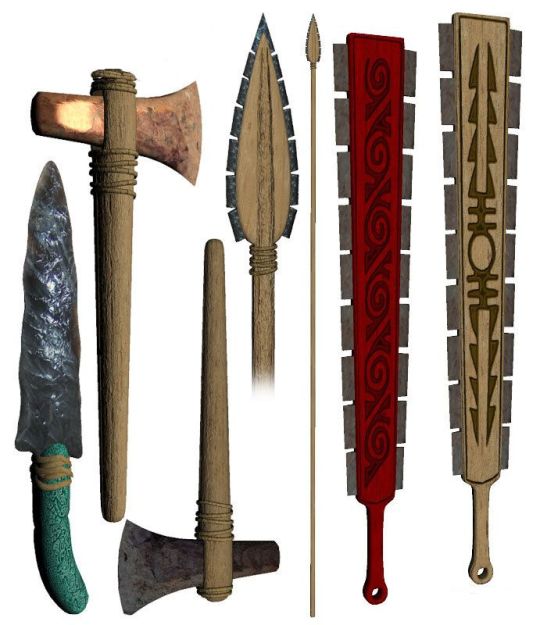
Meanwhile, there was a wooden Mayan dart gun that looked like this:
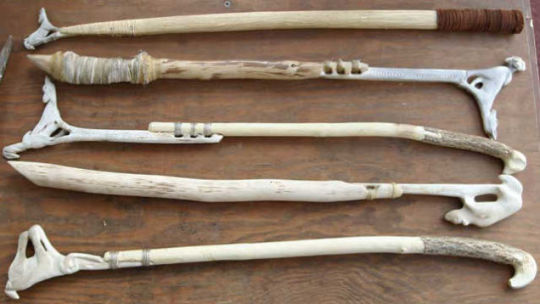
Descriptions for how the dark gun worked can be found here. If these are coupled with poison too they could be insanely vicious.
Hide armor is fine and would probably be an important defense in a setting full of poison dart technology! Not overheating is just important too.
If there are sacred animals and animal companions are a major element for elves living in the jungle, it would likely (according to tradition and fauna) be jaguars, wolves, ocelots, tapirs, eagles, grisons, crocodiles, and so on. Outright, individualized spirit animals should probably be scrapped since there’s heavy debate on whether or how that could be used appropriately in tribal fantasy. Either thorough research is required, using the concept in a non-tribal way (e.g. Jungian psychology), or it’s just not necessary.
Fey gods and primal spirits as part of worship work fine, it might add further tension with humans and dwarves.
If enchanted tattoos are customary, I’d personally advise both checking to see what actual indigenous tattoos look like and then very carefully not ripping those off. Being inspired is fine, but these things can be sacred so it’s important to be respectful and avoid being exploitative or making a caricature.
Entirely male or female tribes don’t make sense with tiny populations that need to worry about being persecuted by other cultures, have small numbers, and occasional nomadic lifestyles. I could see gender segregation maybe if it was a very stable and stationary society where finding a partner and reproducing was super ordered and sacred and everyone knew exactly where everyone else was at all times. Not the case here. If anything, this seems like an instance where male and female elves would have more egalitarianism within mixed gender tribes due to low birth rates and long lifespans. Leaders could be male or female, hunters and craftsmen and medics and spellcasters could all be male or female. Rituals surrounding conception and childbirth are fine though.
Nomadic versus stationary lifestyles I think varies tribe to tribe depending on whether the strategy is run and hide from outsiders or hide and defend against outsiders with a fortress full of traps.
TROLL: Strength +4. Dexterity +1, Constitution +5, Intelligence -2, Wisdom -1, Charisma -2, Darkvision, Keen Smell, Regeneration, Loathsome Limbs.
Official Description:
Trolls are a ravenous, predatory species of giant-kin found throughout almost all regions and climates from arctic wastes to tropical jungles. They have several sub-species. All are uncivilized, monstrous creatures with voracious appetites that roam from one area to the next feeding upon whatever they can.
Most trolls are not overly territorial except with their own kind. They have no natural predators in the wild.
A typical adult troll stands around 9-feet tall on long, ungainly legs. Their deceptively thin bodies have thick, rubbery hides colored in shades of mossy green or putrid greys, possessing long arms that end in massive claws. The skull of a troll has a messy, hair-like growth colored black or steel grey. Females are typically larger and more powerful than males.
Although they walk upright, trolls possess a severe hunch which causes the backs of their hands to drag on the ground. When they run, their arms dangle. Despite their awkward physical appearance, trolls are surprisingly agile and well-adapted to be masterful climbers.
Troll senses are unbalanced. They possess poor hearing and sensitivity to light but superior olfactory senses.
Perhaps the most well-known factoid of trolls is their regeneration. Whether a slash in its rubbery hide or a dismembered limb, trolls can rapidly heal through most wounds. Only acid or fire can arrest the regeneration properties within a troll's flesh. Dismembered limbs will continue to attack opponents even after being severed.
Because of the regenerative properties of troll blood, it is extremely valuable. The blood that could be extracted from one troll is worth upwards of 400 gp. This green viscous liquid is used in the manufacture of poisons, antidotes and certain potions of healing.
Due to the adaptive nature of their physiology, trolls are especially susceptible to mutation. Although it is uncommon, actions taken throughout a troll's life could result in a physical or behavioral change within the same generation.
Trolls have little in the way of society. They travel in non-migratory clans of 3-12 and, upon discovery of an area rich with prey, will establish a lair. Caves are most favored, often located near smaller human settlements or just off established roads. They are opportunistic feeders who target those who stray too far from groups. Although they don't fear humans when encountered, they respect them as a group known to wield fire. Once established within a region, the band of trolls will hunt and devour as extensively as possible until all resources have been exhausted.
Troll dens are filthy places, led by a matriarchal shamanistic female who has a greater appetite for sentient flesh. This female-led dynamic extended into their faith as well, as each clan attributed their founding to a ancestor known as a great mother. They believe this being is a daughter of the ogre-deity.
Trolls have no language of their own, but speak giant and a guttural mix of common, orcish, goblin, and giant. Any culture they possess is passed down orally, usually kept within a single clan. Communication is often simple assertions for dominance or a mating female presenting a kill, along with a shared meal, to a prospective male.
Personal Commentary:
"All are uncivilized, monstrous creatures with voracious appetites that roam from one area to the next feeding upon whatever they can.” This is the kind of thing that needs to be eliminated. Not practical, not sufficiently interesting, not realistic or relatable.
“Due to the adaptive nature of their physiology, trolls are especially susceptible to mutation. Although it is uncommon, actions taken throughout a troll's life could result in a physical or behavioral change within the same generation.” This also has to go because Lamarck was full of it and that’s not how mutation works.
Time to rework this section into something wild.
Simple social structures that require little in the way of tools or technology works fine, but I do think certain elements are important and seriously do require recognition. First, if trolls wear clothes, paint, have tattoos, any of that at all, they have to be able to make them. That requires organization, some measure of intelligence, and a desire for those things toward a specific end. Even if “clothes” amounts to “a smelly, inexpertly tanned leather loincloth”, that still counts. Second, rope. If rope exists to tie garments on as per the picture, that is also a craft that trolls need to be capable of. To be honest it might even be useful to them if they want to transport prey alive to keep it fresh, if they want to fish, and if they want to construct even a crude form of shelter. The prey-preservation in particular is important since trolls prefer to eat without cooking their food, fire being a weakness of theirs. Even if they are highly resistant to bacteria, there’s a certain level of spoiled no animal’s going to touch and it’s important to maintain restrictions like that for added dramatic tension and risk.
Third, language. Trolls having any measure of oral tradition and capacity to communicate, particularly with non-trolls, is a huge deal. So while they don’t have to be the rocket scientists of the jungle setting, lets not treat them like animals here.
Territorial toward other trolls but not other species is fine. No natural predators is not. Other humanoids exist, coatls certainly exist, this is a fantasy setting full of dangerous shit and trolls are not the apex predator. Height and physical characteristics are fine, but I object to “hair-like growth”. Just call it hair, there’s no need to overcomplicate here. This is “blood orange” all over again.
Arms being long enough to be active inhibitions while running would not be a thing, fantasy DnD evolution would have phased that out. I’d be more open to trolls being knuckle-draggers than tasloi because it’s a major point that trolls are much more limited in their technology/intelligence, and this also reflects their lifestyle practices. Trolls probably move similar to great apes.
If troll limbs are not re-attached within a certain time frame, I think the severed limb should die and the troll-body needs to regenerate over time. Think like geckos with their tails chopped off. I’m not sure if trolls can or should be able to survive without brains or if they are capable of regenerating brains. These are the real questions.
More seriously, trolls probably have interesting ideas about death and distinct funeral rites since they’re so hard to kill once they’re established.
There’s a contradiction between trolls being non-migratory and trolls clearing out an area of all possible prey before moving to a new spot. I think very low-birth rates (anything else would just decimate the population given regenerative abilities), possibly high infant-mortality rates even within low birthrates, and non-migratory behavior all work. Travel presents risk, if a band of trolls knows they have established territory and how to defend their camp then that’s fine.
Other races might consider troll-dens filthy but I bet they don’t poop where they drink. They also probably either clean carcasses of all flesh or dispose of inedible bits. No need to raise risk of disease with spoiled food sitting around.
If there is religion, ideas of a great mother, tradition, and any level of shamanistic practice trolls need at least a little more intelligence as well. I’d go so far as to say there are probably very interesting spiritual chats among trolls. Food preparation (e.g. salting or seasoning) is likely important, making offerings to the deity is likely important, any clothes or shelters or ritual markings are likely important. Different trolls in a band have different jobs to perform, it’s likely very collectivist with shared kills and other resources but these are employed trolls here conducting skilled labor and by god they deserve respect.
Anyway, they probably don’t get along so well with other groups. It wouldn’t surprise me if trolls, while they have a super high threshold for bacteria and things spoiling, have developed immunity to diseases contracted by either cannibalism or consuming species that are too similar biologically. Trolls eating people is too consistent of a theme.
If a troll actually manages to learn Common, that troll is probably very smart and would act as a representative if there was ever a need for relations with other races. This could mean performing labor in exchange for goods and services, since money doesn’t mean much to trolls.
TABAXI: +2 Dexterity, +1 Charisma, Darkvision, Feline Agility, Cat’s Claws, Cat’s Talent.
Official Description:
Tabaxi are taller than most humans at six to seven feet. Their bodies are slender and covered in spotted or striped fur. Like most felines, Tabaxi have long tails and retractable claws. Tabaxi fur color range from light yellow to brownish red. Tabaxi eyes are slit-pupilled and usually green or yellow.
Tabaxi are competent swimmers and climbers as well as speedy runners. They have a good sense of balance and an acute sense of smell.
Tabaxi are a reclusive people who often avoid interaction with other intelligent races. However, as each tabaxi possesses a specific feline trait, some have an innate curiosity that compels them to travel and seek out stories, artifacts, new experiences and knowledge, never remaining in the same place or obsessing over the same piece of lore for too long.
In general, tabaxi do not care for wealth but they have an almost obsessive interest in ancient artifacts, relics and magic items, but not for the items themselves as much as the stories and secrets they hold. Once an item has been thoroughly examined and studied, its secrets revealed, it loses its allure and the tabaxi quickly lose interest and pass it on.
Not all tabaxi are motivated by curiosity to leave their homeland, however. Some find safer ways to satisfy their fleeting obsessions by becoming traveling minstrels and tinkers, often accepting interesting objects and stories as payment for their services.
Tabaxi are exceptional hunters and utilize these skills in combat. Speed and stealth combined with their natural camouflage mean that tabaxi are particularity skilled at surprise attacks. Tabaxi are even known to disguise their scent with aromatic herbs. Their hunting skills and intelligence make them formidable tacticians. Groups often drive prey into ambushes, sometime playing with their doomed foe before killing them. Tabaxi clans do have berserker warriors among them known as blood-stalkers.
For weapons tabaxi favor bolas, slings, macas, and javelins with atlatl. These weapons will often be made from wood, bone or stone. Tabaxi are just as likely to use weapons as they are to use their claws and teeth. Their preference of simple weapons is not due to a lack of capability. Tabaxi are quite capable of adapting to new technology or salvaged weapons.
Due to their knowledge of hunting, intelligence and sense of smell, it is practically impossible to trap a tabaxi.
Tabaxi society is built around clans. Clans are split evenly between males and females with 3 to 12 young. Each clan has several Hunts made up of two to eight individuals each. The Hunts patrol the area around the clan's lair.
Although tabaxi lairs are sometimes just temporary, they’re more often small villages of ramadas. Each ramada is built from wooden poles with grass roofs.
Clans are led by elders. About half of the time, leaders are aided by shamans. Clans tend to avoid each other and do not engage in trade. Tabaxi consider trade to be demeaning but in rare instances use third party agents to trade for them.
Tabaxi have few enemies and only the most degenerate clans attack members of other intelligent species without good reason.
Tabaxi are sometimes hunted for their pelts. Each pelt can be sold for up to 50 gp. Young tabaxi can be sold on the black market for around 225 gp.
Personal Commentary:
I used the official image, but jungle tabaxi probably look more along the lines of this:
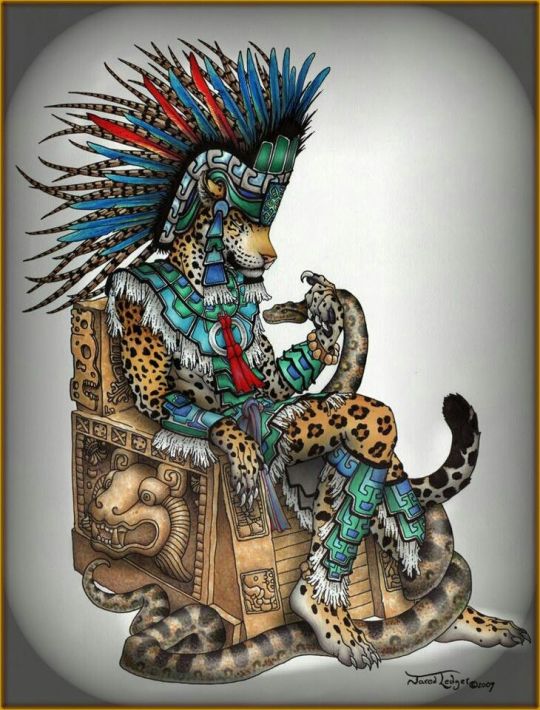
Just go full jaguar. It completely makes sense and is culturally/environmentally consistent. Being jaguar-based also means heavier, more muscular bodies. Big cat tabaxi don’t need slit pupils since jaguars don’t have them.
I’m not a fan of “each tabaxi has one feline trait”, it reads bizarre, inconsistent, and arbitrary. Just make them feline, with all the variation in personality that actual cats have. Curiosity being a strong cultural quality works. I’d argue hunting, (occasionally sadistic) play, social grooming, leisure, acrobatics, and physical competition all make sense too.
I tried to hold back talking about the elephant in the room, but both to avoid furry territory and in light of how many young are around at a given time tabaxi probably have eight nipples.

I’m sorry, everyone. If we’re going hardcore serious DnD worldbuilding science this is the life that waits for you.
Stationary versus nomadic tabaxi territory makes sense, weapon preferences make sense, jobs and hunting strategies make sense. Tabaxi bards better be yowling and roaring and making exciting traditional cat sounds though. Also, controversial opinion I think tabaxi probably only bother with clothes if they’re living in a culture dominated by other humanoids. Their fur is great protection and camouflage already, why mess with that?
I don’t think most other groups would be hunting for their pelts or enslaving them in the jungle setting because jaguars were often viewed as sacred historically. Grung probably have no problem doing this but have little need for pelts. Trolls and tasloi might be a different story with skinning. Humans, elves, halflings, and dwarves native to the area I’d be surprised by those activities though. In human and dwarven empires while I suspect tabaxi were still subject to imperialism, they might or might not receive a pass on being used for sacrifice depending on whether it was viewed as a better tribute to the deity or heretical. Tabaxi were probably considered highly desirable as priests or clerics by other races, although those roles might bore them to the point that they’d need to be bribed with great food and various trinkets/finery. Tabaxi in canon have stigma against dwarves with albinism and I don’t mind keeping that as a source of conflict between the two groups.
But yeah. Simple cat people living simple cat lives.
HUMAN: +1 To All Ability Scores, +1 Extra Language.
Official Description:
They have lean bodies and angular features. The men never possess beards.
These humans, as a rule, are strong and intelligent but often lack wisdom in their decisions.
Their culture is largely warlike, and they were the first people in the region to practice human sacrifice. Religion is an important part of day-to-day society. There’s also a strong emphasis on aesthetics over substance. This could mean pyramids with grandiose mosaics and gaudy colors.
Personal Commentary:
Scrap those comments on “gaudy”, “aesthetics over substance”, and “lack wisdom”. These humans align pretty closely with the Aztecs in how they’re set up, and the Aztecs were insanely interesting so I’ll be referencing them a lot in terms of how jungle humans might operate.
Aztecs looked kind of like this:
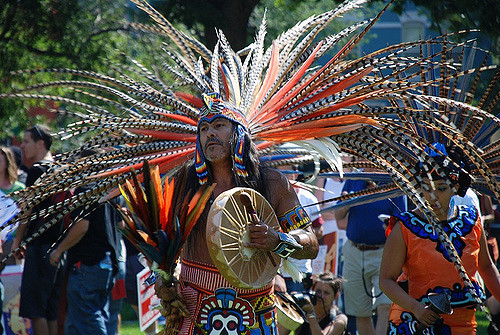
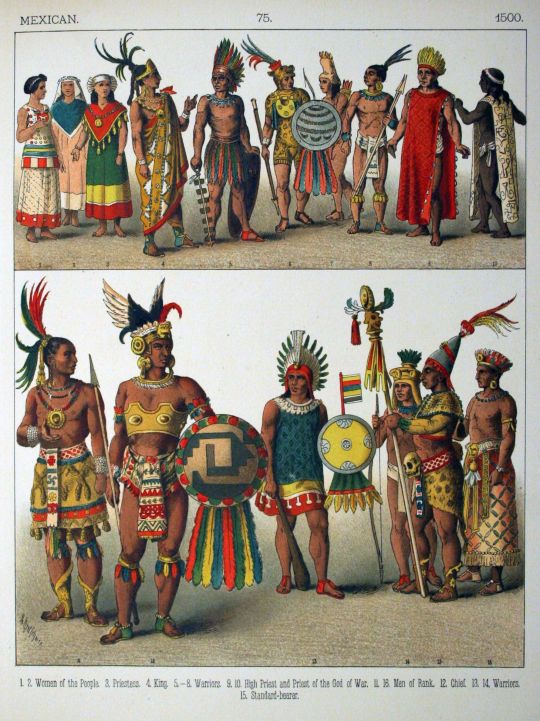

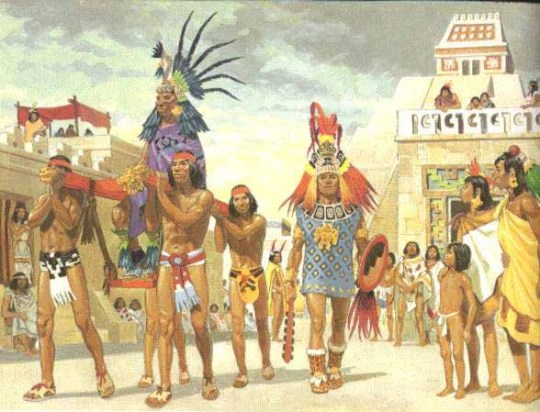
Meanwhile, their cities looked something like this:

The Aztecs were very into conquest, more than the Mayans were from what I gather. There is a comparison chart here between the two civilizations (although I heard the Mayans were more focused on corn harvests) that might help avoid confusion somewhat. I’ll also be linking other research sources in this and the dwarven section since I’m personally tying humans to Aztecs and dwarves to Mayans. I don’t want to get too far off the DnD focus by splurging on research, so while I’ll provide links I’m mainly going to be discussing more fantasy elements.
Aztec History Lesson #1
Aztec History Lesson #2
One important exerpt:
“The Aztec Artists:
Stone workers who carved statues and other idols
Scribes kept records of events, decrees, and history
Painters of pictographs
Pottery makers used clay shaped by hand
Feather designers making head dresses and other adornments (usually for nobility and rulers). Feathers of brilliant colored tropical birds were used.
The Musicians and Dancers:
Instruments were rattles, whistles, flutes, bells, shells, drums, and trumpets
Dancers were trained at an early age. Every one in the village danced before the gods to honor, beseech, and praise.
The dancers acted out significant acts of the gods in attempts to imitate them.
Costumes were different for different ceremonies. Bright colors, bells, and elaborate feathers often were part of the most important rituals.”
If you’re going with a human bard based in Aztec tradition, rattles, whistles, flutes, bells, shells, drums, and trumpets are all fair game. Dancing is very much fair game, and both music and dancing would be big parts of jungle human society. Stonework, mosaics, scribes (written language existed!), pottery, and so on were also very much part of the setting. IIRC I’ve read that metalwork was not practiced among pre-Columbian Aztecs or Mayans, and wheels were not generally used either. While artistic license DnD/people can always change this, IMO it makes for some interesting weapons and technology. Leatherwork and woodcarving would be massive industries. Human settlements being based on the banks of canals or rivers makes a lot of sense in light of this too, since it allows for easier transportation of heavy materials.
Jungle-based humans would be run on monarchies, but with high priests/priestesses being comparably high status to that monarch. Worship and the gods would be integral parts of society, and particularly given a human empire would be large and constructed through a combination of trade and conquest the population is high enough to allow for sacrifice provided everything else is running smoothly. Sacrifice, especially if the deities are receptive and can communicate their approval through clerics, could be used both to maintain obedience in conquered groups through fear and to ensure better ventures for the empire, such as harvests or hunts. If the conquered groups still benefit to some degree from sacrifice as absorbed parts of the empire, that reduces the odds of rebellion somewhat... especially if those sacrificed are revolutionaries or criminals. Tithes and rights would probably be different for non-native citizens, but if status elevation is possible through deeds of loyalty or significant contributions to the state that encourages patriotism in newly integrated groups.
Wizards, warlocks, and sorcerers would likely be important not only in combat, but in helping maintain cities and the crops that sustain them. Livestock, too, would be very important given heavy materials are used architecturally.
Because numbers are less of a concern and more resources are at the disposal of a human empire, I think greater flexibility being afforded with respect to gender roles makes sense. There are probably still restrictions on things like when it is acceptable to conceive for example due to health hazards, but artistic license with respect to jobs being based purely on how well a job is performed seems fine. A stable society has more room to experiment. Patriarchal polygamy can be practiced among the nobility, with the patriarchal aspect in place because biologically women can’t conceive and are expected to take it easy for the nine months they’re pregnant. A man, however, could continue making babies and working no problem. The issue in this instance is whether multiple partners would be supported by a single man during the time that they’re pregnant, so only very wealthy, high-status men would be able to support multiple wives and any children those wives had. Most likely the monarch had multiple wives and/or concubines, and some (but not all) nobles would be in similar situations. Common people would be more likely monogamous.
Textiles would be primarily cotton-based for accuracy and because it breathes better than say, wool.
Humans don’t need to have much stigma against other races because they’re approaching any relationship from a position of power. Likely there’s some tension with dwarves since (as I’m setting things up at least) dwarves are a major rival civilization and can compete in terms of resources, manpower, and territory. Yuan-Ti might be considered allies, particularly if there is a shared serpent god a la Quetzalcoatl (granted, Mayan) or if coatls...
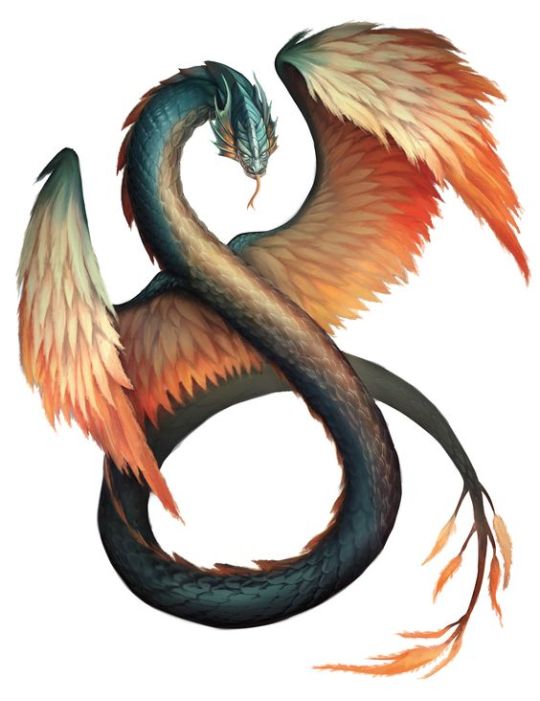
...are considered mutually sacred. Grung are likely on their own in terms of allies because they’re so prone to abducting and enslaving other races while holding deep-seated ideas of racial superiority. Any negotiations between humans and grung would likely be dangerous and with little trust lost. Members of less powerful races could be sucked into the empire, but depending on how a given group weighs costs/benefits of being part of the human empire they might have very different opinions about that.
YUAN-TI: +2 Charisma, +1 Intelligence, Darkvision, Innate Spellcasting, Magic Resistance, Poison Immunity.
Official Description:
Yuan-ti call themselves vrael olo (which means "favored ones"). Daily use typically uses the shortened "vrael", and can be modified to "auvrael" (meaning friendly or known yuan-ti) and duthrael (unfriendly or unfamiliar yuan-ti).
In general, the more serpentine features a yuan-ti possesses the higher its status in yuan-ti society. Abominations are at the top of their society, followed by halfblood, and finally purebloods. Within their subraces, yuan-ti are ranked by achievements and the demonstrated favor of their deity.
Whenever possible yuan-ti choose manipulation over open confrontation, the whisper over the fang.
Female yuan-ti lay eggs in brood chambers, mark each clutch with its parentage, then abandon them to the care of broodguards. Yuan-ti hatchlings are hatched from these eggs (which are always curious and eager to explore) and will seek food immediately. Hatchlings will even eat each other if sustenance is not at hand. Initial training and education is provided by broodguards, who monitor the hatchery. Young yuan-ti are trained in the use of their powers shortly after being born. They turn into tiny vipers and slither to the nearest cover when they see danger or hear a warning.
Yuan-ti in their prime will scheme, breed, and work on behalf of their tribes. Breeding is carefully controlled (seen as a holy act) in order to produce the "best" offspring. Prospective partners will coldly measure one another and if both agree that the match is promising, they usually mate, regardless of their personal affections towards each other.
Often elder yuan-ti grow lazy when they reach great age, sleeping or lying in torpor for longer and longer periods - first for days, then weeks, then seasons at a time, then finally years upon years. At last, they fail to wake at all.
Yuan-ti come in several distinct castes or breeds. The three most prevalent are as follows.
Purebloods: Appear mostly human, with minor reptilian features such as slitted eyes, a forked tongue, or patchy scales. They serve as diplomats and infiltrators pretending to be human.
Malison: Humanoid in shape, they have a wide variety of noticeable serpentine features such as a snakelike tail in place of legs, full scales, a cobra hood, a snake's head, and/or snakes in place of arms. Malisons, also called halfbloods, serve as warriors and temple assistants.
Abominations: Almost completely snakelike, with only a few human features, such as arms or a humanoid head. They are the most venerated within the yuan-ti society, serving as clerics or other roles of power.
Personal Commentary:
First, on the record there are too many opportunities to tie things to Quetzalcoatl not to play with Yuan-Ti. I’d even go so far as to say Yuan-Ti and aarakocra should sometimes mix to produce feathered serpent people for maximum aesthetic/sacred value. Second, I deliberately did not include a lot of things like the canon Yuan-Ti idea of divinity and their goal of destroying the world because I don’t think it’s needed or engaging for this setting.
I also think there should be fewer snake-headed yuan-ti within half-bloods because if you have the opportunity to make a naga just fucking do it. Do it for the early-2000′s internet that remembers these things and all of the consequences of that.
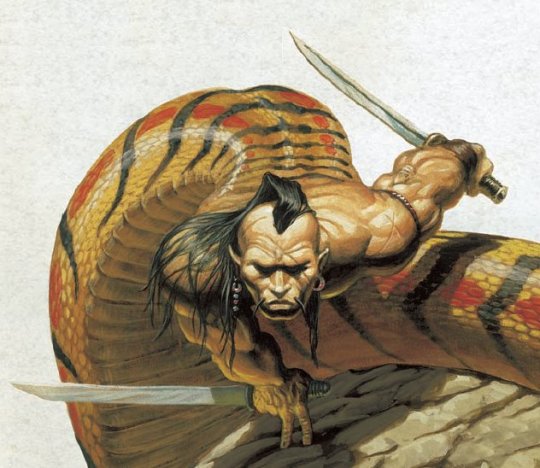
I don’t have any major objections to information presented above, but I do think that there should be more influence from actual constrictors in particular. I think I remember them doing bizarre breeding ball activities rather than carefully selected mates and that’s bizarre and unsettling enough for me to say just go for it.
Also, snakes are kind of emotionally odd and don’t exactly experience bonding, morality, and emotions in the same ways that mammals do. This isn’t to say those things don’t exist at all, but it’s worth making a few adjustments so that the less pure a Yuan-Ti is, the more alien their perception and behavior reads.
Basically snakes are weird, it’s okay for Yuan-Ti to be weird too.
Also they are probably, similar to tabaxi, very in demand as priests and other spiritually significant members of human and dwarven societies. I don’t think they hide as much as elves or halflings unless they really want to avoid being brought into an existing empire, but they get some good resources and perks for being brought in (as with tabaxi, less likely to be sacrificed) so it’s not such a bad deal for them. Within Yuan-Ti societies they probably sacrifice more humanoid races and consider it EXTREMELY heretical to sacrifice more serpentine Yuan-Ti. If humans or dwarves are firm demanding sacrifices as tribute it’s going to be purebloods, and Yuan-Ti practicing human sacrifice themselves aren’t going to be choosing their own race or even tabaxi, aarakocra, or grung. They’re picking humans, dwarves, elves, halflings, trolls, tasloi, etc. They might even help humans and dwarves conducting ritual sacrifice provided the victims selected overlap with their preferred victims. Yuan-Ti also probably do have some notions of racial superiority, but it’s a little more subtle in its presentation.
As with other jungle races no wheels, no metals. They probably take steps to make sure they can be kept sufficiently warm as a cool-blooded race. I suspect they have neutral to positive relations with most races in this setting with the exceptions of trolls, grung, and maybe a few tabaxi tribes. They should have consistently positive relationships with aarakocra because again, feathered serpents. This is probably a specifically regional development and has a lot of history.
DWARF: +2 Constitution, Darkvision, Dwarven Resilience, Dwarven Combat Training, Stonecutting.
Official Description:
These shield dwarves are albinos, with white skin and hair coupled with pink eyes. This means that they were very sensitive to the hot sun and therefore only come above ground at night. Otherwise, they are physiologically like most dwarves.
Jungle dwarves are even more somber and grumpy on average than other shield dwarves. They are not especially violent, but they will defend their homes and mines at any cost.
Most dwarves live deep below the earth within one of many mines full of gems, minerals, and ore. They made use of surface animals as transportation and muscle during mining operations. Their culture revolves around the wealth of their subterranean mines, and they are superb craftsmen, particularly when working with gems and precious metals.
Tabaxi superstitions equate the color white with death, so jungle dwarves are often feared.
Personal Commentary:
Like I said for humans, no metalsmithing and no wheels makes for a dramatically different setup where dwarves are concerned. I’m going to go ahead and say the race isn’t purely albino, but does have a significant subpopulation with albinism that is prized as a beauty standard while being associated with luxury/not having to do so much grunt work. Dwarves with albinism would probably be given preferential status as clerics, wizards, or warlocks regardless of class, since they could be of use there while their efforts would be less productive in other areas.
Most cases jungle dwarves likely have a mid-brown or tan complexion and dark hair/eyes. They can still absolutely be nocturnal however, which especially if they are modeled after Mayans gives them more access to reading stars given innovations in astronomy and calendar systems.
Some cultural information about the Mayans:
Mayan History Lesson #1
Mayan History Lesson #2
Mayan History Lesson #3
Mayan History Lesson #4
Further, Mayans looked something like this:
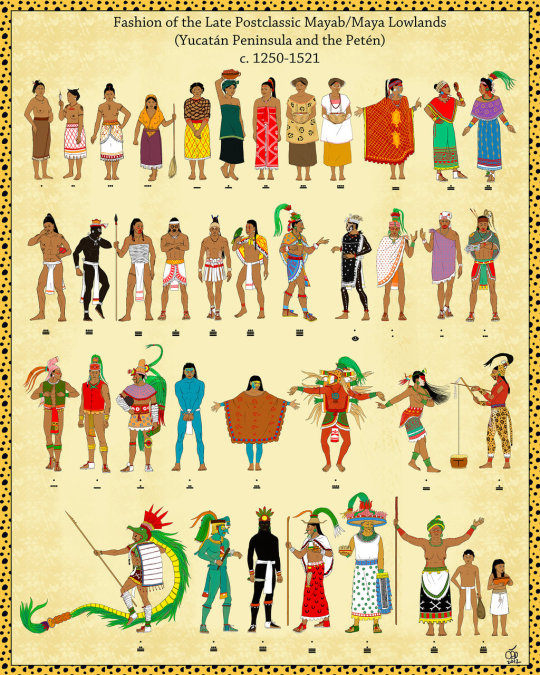
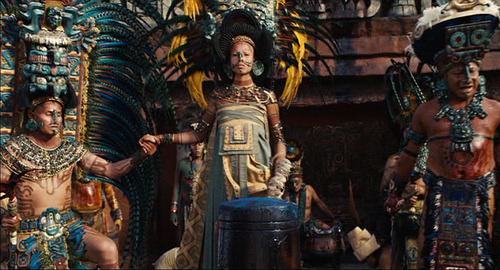
And their cities looked like this:

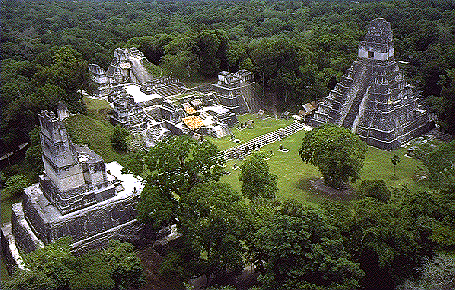
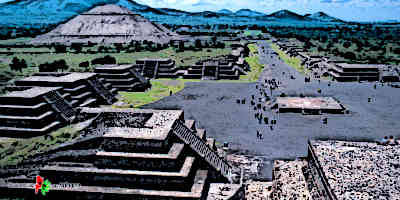
Important excepts include...
“Most artistic and cultural achievement came about during the Classic period 300 - 900 AD. The Mayans developed a complex, hierarchical society divided into classes and professions. Centralized governments, headed by a king, ruled territories with clearly defined boundaries. These borders changed as the various states lost and gained control over territory.”
“Anthropologists used to contrast the "peaceful" Mayans with the bloodthirsty Aztecs of central Mexico. Although human sacrifice was not as important to the Mayans as to the Aztec, blood sacrifice played a major role in their religion. Individuals offered up their blood, but not necessarily their lives, to the gods through painful methods using sharp instruments such as sting-ray spines or performed ritualistic self mutilation. It is probable that people of all classes shed their blood during religious rites. The king's blood sacrifice was the most valuable and took place more frequently. The Mayans were warlike and raided their neighbors for land, citizens, and captives. Some captives were subjected to the double sacrifice where the victims heart was torn out for the sun and head cut off to pour blood out for the earth.
The Mayan civilization was the height of pre-Columbian culture. They made significant discoveries in science, including the use of the zero in mathematics. Their writing was the only in America capable of expressing all types of thought. Glyphs either represent syllables or whole concepts and were written on long strips of paper or carved and painted on stone. They are arranged to be red from left to right and top to bottom in pairs of columns. The Mayan calendar begins around 3114 BC, before Mayan culture existed, and could measure time well into the future. They wrote detailed histories and used their calendar to predict the future and astrological events.”
“Excavations of Maya sites have unearthed plazas, palaces, temples and pyramids, as well as courts for playing the ball games that were ritually and politically significant to Maya culture. Maya cities were surrounded and supported by a large population of farmers. Though the Maya practiced a primitive type of “slash-and-burn” agriculture, they also displayed evidence of more advanced farming methods, such as irrigation and terracing.
The Maya were deeply religious, and worshiped various gods related to nature, including the gods of the sun, the moon, rain and corn. At the top of Maya society were the kings, or “kuhul ajaw” (holy lords), who claimed to be related to gods and followed a hereditary succession. They were thought to serve as mediators between the gods and people on earth, and performed the elaborate religious ceremonies and rituals so important to the Maya culture.
The Classic Maya built many of their temples and palaces in a stepped pyramid shape, decorating them with elaborate reliefs and inscriptions. These structures have earned the Maya their reputation as the great artists of Mesoamerica. Guided by their religious ritual, the Maya also made significant advances in mathematics and astronomy, including the use of the zero and the development of a complex calendar system based on 365 days. Though early researchers concluded that the Maya were a peaceful society of priests and scribes, later evidence–including a thorough examination of the artwork and inscriptions on their temple walls–showed the less peaceful side of Maya culture, including the war between rival Mayan city-states and the importance of torture and human sacrifice to their religious ritual.
Serious exploration of Classic Maya sites began in the 1830s. By the early to mid-20th century, a small portion of their system of hieroglyph writing had been deciphered, and more about their history and culture became known. Most of what historians know about the Maya comes from what remains of their architecture and art, including stone carvings and inscriptions on their buildings and monuments. The Maya also made paper from tree bark and wrote in books made from this paper, known as codices.”
“By the late 20th century, researchers had concluded that the climate of the lowlands was in fact quite environmentally diverse. Though foreign invaders were disappointed by the region’s relative lack of silver and gold, the Maya took advantage of the area’s many natural resources, including limestone (for construction), the volcanic rock obsidian (for tools and weapons) and salt. The environment also held other treasures for the Maya, including jade, quetzal feathers (used to decorate the elaborate costumes of Maya nobility) and marine shells, which were used as trumpets in ceremonies and warfare.”
“Mayan farmers grew Maize and guords. Maize was the main food of the Mayans which was prepared by the women in a variety of different ways. These included an alcoholic drink called balche, which was sweetened with honey and spiced with bark as well as flat maize cakes in a form of bread which are known today as tortillas. The Mayans also grew avocados, chilli peppers, squash and sweet potatoes.
The Mayans also cleared the forest floor so that small, edible plants could grow. Dogs were the only tame animals of the Mayan people. They raised turkey and honeybees in farms and hunted deer, rabbits and piglike animals. They also fished for shellfish and fish in rivers and the sea.
Chocolate was greatly loved by all Mayans, rich or poor. It was made from cocao and tasted very bitter. In order to sweeten the drink they added honey and chilli for spice. This was mixed with water and sometimes maize. The Mayans were very fussy with their chocolate drink and required froth ontop. In order to do this they would poor the drink from high above the cup or blow on the spout of the pot in order to mix air with the drink.”
Back to dwarves though. I seriously think it’s better to draw from the Mayans in this instance than just going with what DnD plopped down. Strict social hierarchy, strict calendar system, monarchy (possibly all consisting of dwarven aasimar) and high-ranking priest class (similar to humans) but with bloodletting a huge ritualistic practice conducted throughout society as part of standard religious practice. Sacrifice being used specifically with prisoners of war to set an example as offerings also retains historical consistency and makes sense as a means of intimidating enemies while getting DnD-style godly favor.
Temples, astronomical sites, and sports being important to dwarves also fleshes them out beyond stereotypes. Mining would NOT be a major cultural touchstone, particularly without metalsmithing. These would likely be above-ground dwarves whose craft focus manifested more in manipulation of various stones, shells, woods, and leathers. Dwarven cuisine in this region is also probably in-demand.
Physically, while body hair still exists I’d argue that due to the sheer heat and humidity it might be less prevalent compared to other dwarves. Ritual tattoos and scarring make sense, particularly given bloodletting practices. As with humans magic users likely play a prominent role in agriculture and architecture even outside combat. Also similar to humans, polygamy could be practiced among wealthy nobles but was not as prevalent outside that. One major difference that might be fun to utilize for dwarves compared to humans though, there were some cases historically of the Mayans having queens as opposed to kings.
The roles of Mayan women that I think would be worth continuing for dwarven women in the jungle would include bearing and raising children, economics, textiles, government, and religion (e.g. ritual practices). In some areas matrilineal bloodlines were prioritized, so I think that might be fun to do with the monarch since it guarantees the bloodline is pure. That also works if the monarchs are aasimar as per divine representatives. In non-polygamous households unfaithfulness could be fiercely punished by the wife, and in polygamous households there would often be fierce competition between wives.
Overall I think in terms of gender roles there can be a little more fluidity due to societal strength, stability, and influence, but class and profession are probably much more rigid.
There is tension between dwarves and humans, but dwarves have a more consistently positive relationship with yuan-ti and aarakocra due to heightened spiritual reverence for feathered serpent deities, coupled with their aasimar. Other races have similar dynamics to dwarves as they do to humans, but fear associated with the color white probably does create greater tension with tabaxi in particular. Grung having caste so strictly color coded might have slightly higher regard for albino dwarves due to the class specialization they tend to receive.
BONUS:
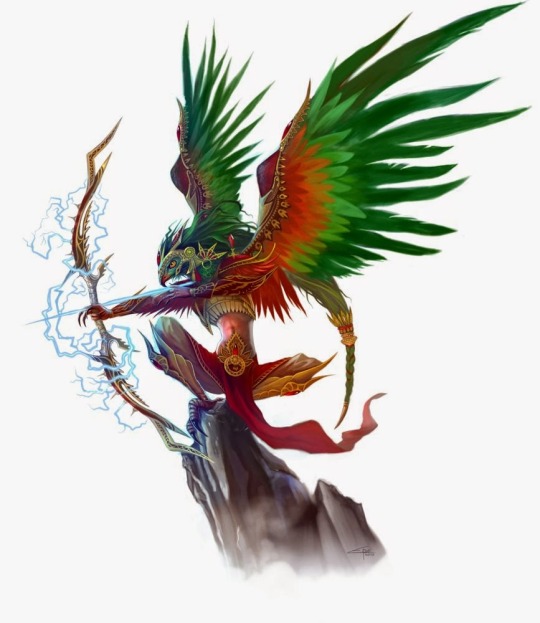
AARAKOCRA: +2 Dexterity, +1 Wisdom, Flight, Talons.
Official Description:
Aarakocras resemble humanoid birds. The average specimen stands about 5 ft (1.5 m) tall and has a wingspan of 20 ft (6.1 m). Halfway along the edge of each wing is a hand with three human-sized fingers and an opposable thumb. An elongated fourth finger extends the length of the wing and locks in place during flight. The hands can’t grasp while flying, but they are nearly as useful as human hands when an aarakocra is perched and its wings folded back. Their powerful legs end in four sharp talons that can unlock and fold back to reveal another pair of functional hands. These humanoids have hollow, fragile bones. Their faces combine the features of both parrots and eagles. They have gray-black beaks and black eyes. Plumage color varies, but males generally have red, orange, and yellow coloration, while females tend towards brown and gray.
Aarakocras live among the highest mountain peaks in small tribes that control hunting territories and share a communal nest. The eldest male serves as leader, assisted by the tribe's shaman. Aarakocras are known to be extremely claustrophobic.
Personal Commentary:
Why use parrots and eagles when you can use quetzals?
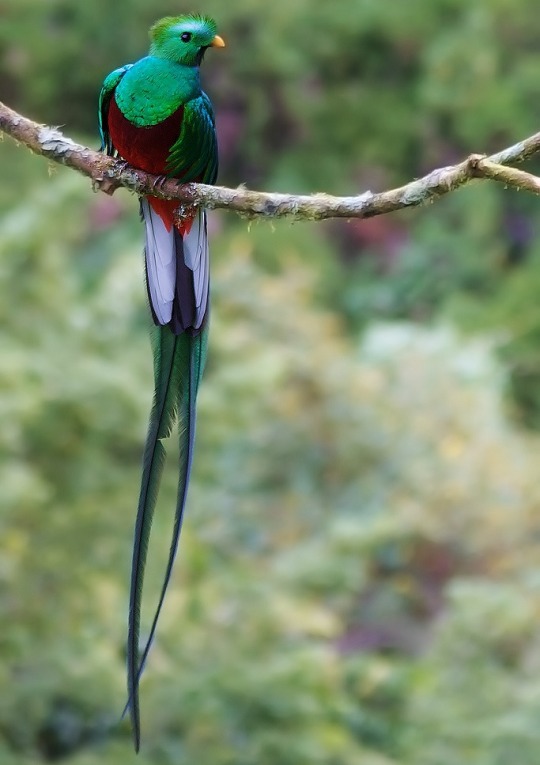
These birds are in the area and were commonly used to adorn clothing for Mayans and Aztecs. They’re pretty and distinct, too.
I don’t think wings-as-hands are necessary or make sense here. If the aarakocra has a twenty foot wingspan and halfway up that is where the fingers are located, the aarakocra has 10 foot long arms. It’s not useful. Just give them six limbs like an angel.
No mountain peaks in this jungle, and I don’t think communal nests are needed at all. There’s an opportunity to seriously, SERIOUSLY play with nest architecture here and I don’t see why that should be passed up. Probably there are also nest-structures for various aarakocra craftsmen, spellcasters, and spiritual leaders.
Aarakocra bards are probably fantastic, it’s all birdsong. They probably do well with bows and swords too because if their hands are free while flying they get different distance, speed, and position advantages. As a disadvantage, these are big bird people flying in an area full of trees so they can’t always reach maximum speed.
Aarakocra, like tabaxi and Yuan-Ti, are likely very desirable as priests for humans and dwarves. Like I mentioned for Yuan-Ti, I think they have consistent positive relations with Yuan-Ti and do sometimes crossbreed to form feathered serpent people.
Quetzals feed on fruits, berries, insects and small vertebrates like frogs. I’m going to say aarakocra are the only race to have developed immunity to grung poison, and they sometimes do eat them. Whether this constitutes cannibalism is up for debate. I think aarakocra also probably fish a great deal, cultivate fruit trees, and feed on other fauna in the area.
Thank you for reading, congratulations if you’ve gotten this far, and feel free to offer suggestions/critique!
6 notes
·
View notes
Text
Genre Conventions
We near the end of this blog’s journey, the final task is to simply find out what exactly what makes a movie fit into its genre. Rather helpful for my two movies, as Peter Pan (2003) is Fantasy/Romance and HTTYD is Fantasy/Drama. Very mere differences, let’s focus on the similarities.
Common techniques used in the Fantasy genre.

Dragons
Unicorns
Witches and Wizards
Tiny little men obsessed with rings
Coming in at #8 on the ‘Top 10 Movie Genres’, Fantasy is a widely popular form of fiction. It’s considerably the best genre to use for those who have wild imaginations and want to express that in the most vividly dramatic way possible. However unless you’re really into the whole stereotypical Fantasy with Princess’ having to be saved by dashingly handsome Princes’, the entire genre can become a bit of a bore. Practically all of Disney’s movies follow along the cliche Fantasy / Fairytale layout, and that can get a bit overdone.
So it’s no surprise that occasionally different genres get combined. Both films I’ve studied do this;
Peter Pan (2003) = Fantasy / Romance
HTTYD = Fantasy / Drama
Basically a really popular genre mixed with a not so popular one. It works, obviously by the popularity of both films.
Below will be segments used in Fantasy films in order to provide the full magical effect.
And they lived happily ever after...
There’s nothing that bugs me more than a really pointless ending to a movie, you can tell that in little children’s shows, whatever problem arises in the movie will be easily resolved and the guy will always get the girl. However this is a repeating convention to perhaps provide people with a hope that things will always get better in the end. Bit of a false lesson there, but it keeps people happy. It most definitely happens in HTTYD, but Peter Pan? Wendy definitely gets her Happy Ever After, Peter feels some defeat in which he couldn’t get his beloved to stay with him in Neverland; but considering Wendy is the actual protagonist, this convention has applied.

Make Believe Setting
The definition of fantasy is literally “the faculty or activity of imagining impossible or improbable things.” So ideally with this, an unrealistic world would be present also. Because sadly Dragons do not exist and thank god little pixie boys don’t come and kidnap our children with no hope of them returning. Like damn why didn’t their parents just contact the police and say “hey my kids have been whisked away” instead of just waiting by the window for them to come back.
Ahem, but yes usually they all take part in an imaginary world i.e Wonderland, Neverland, Berk, Far Far Away. Typically they also have elements involving magic, supernatural, mythical creatures and legends and the extraordinarily bizarre creations. Such as in Narnia, walking into a closet far enough will whisk the person away into a magical land full of talking animals and evil witches.
Castles / Kingdoms are often seen in this genre’s settings. Where there are higher-ups and working class level people. But it’s so overly exaggerated that it only merely follows along some non-fictional world history.

Character Types
Our protagonist is usually a guy who needs to embark on a type of quest where the outcome is where they have to go up against some villain in order to get the (Princess) to love him. And yes not all fantasy movies use this, but seriously, look at any classical Disney movie.
Experimenting with characters is easily acceptable in the Fantasy movie world, just give it a random name and boom; it exists in your world. Hobbits, Centaurs, Elves, Fairies, Warlocks, Goblins, whatever you call Smeagol.
Shrek however, is quite clever with character types. Because the Princess (Fiona) wants to be part of a fairytale and wishes for a Prince to come and save her, however not for the whole ‘love’ reason. A kiss from someone who she believes she’s in love with, will break some nasty spell. Yet said Prince is a big ol’ Ogre who is only embarking on that adventure in order to get a bunch of fairytale creatures out of his home. Fiona turns out to be a not-so-helpless Ogre herself; and it’s actually hard to note who the main hero is, they’re all heroes in retrospect. Even Donkey.

Maybe Shrek is actually the Princess in need of rescuing.
Mise-en-Scene
Well there’s a fancy French word, and hey, it’s also a Narrative Feature! Hitting two birds with one stone. mise-en-scene is just the arrangement of props, scenery etc used on the set of perhaps a theatrical performance or a movie.
Weapons in this case tend be those of the magical agenda. A Witch may have a wand, a Wizard will have a staff, Hiccup will have Toothless and Peter has a sword. Generally it depends on the setting of the film that decides which weapons will be used. Vikings, typically, were set in the middle ages and used medieval weapons; Peter Pan’s enemy is a pirate, they use pirate’y weapons. Props follow along the exact same idea. With spell books, crystal balls, ‘The Dragon Book’ in HTTYD and Pixie Dust in Peter Pan.
To sum it up, magic and things you wouldn’t usually see in a realistic world, will most likely be in any Fantasy land.

Good vs Evil
Several techniques are used in order to portray the contrast between the good and evil characters. Physical and out-of-film (i.e the mise-en-scene) features can account for some this difference.
To give each film a more friendly approach, the colour / lighting in films tend to be quite saturated and lively. It’s a good technique to use when showing the contrast between good and evil. Evil characters usually have minimal lighting and scenes will have dulled out colours; it also gives the viewers of the film a bit of a head start into who the ‘bad guy’ is, before the Hero perhaps finds out for him/herself. Perhaps this is why the genre isn’t as popular as say the Mystery one, as it seems to ruin the whole surprise of who the antagonist is. The use of different colour palettes act as a definition between the good and bad, and also provide us with that mystical kind of feel.
Costume is another feature used and different Fantasy films experiment with this side of things, in different ways. Following stereotypes, fairies and pixies tend to have flora / earthy outfits (Tinkerbell, Peter Pan). Witches and Wizards have their pointy hats and Princess’ always have their elegant dresses with large petticoats beneath them. If you were to sort different types of people into separate groups, each would have a particular costume that openly expresses what exactly they are. With the whole contrast between good and evil, sinister characters will tend to wear darker attire, and vice versa for the heroes.

Themes & Moral of the Story
Usually these are cliche also, but then again, the whole genre typically is. Through each adventure the hero perhaps goes on, there will always be a hidden message in the story as well as a theme the complements it. These can consist of;
Friendship
True Love / Soulmates
Trust in others and yourself
Breaking away from the control of others / Freedom
Justice always prevails / Standing up for what is right
Overcoming difficulties will result in a good outcome
Fiction vs Reality - Since we know Fantasy is extremely fictional, it gives some an insight into what not to expect in the real world.
Famous Fantasy Movies
Disney’s Narnia, the Lion, the Witch and the Wardrobe
Warner Bros: Harry Potter series
Peter Jackson’s Lord of the Rings
Star Wars
Pan’s Labyrinth

Fantasy + Character Studies
So how exactly does this fit in with HTTYD and Peter Pan? Well if you think about it, they both follow along the fantasy genre quite closely. Hiccup living in a land where dragons are flying around freely, pretty sure you wouldn’t see that in real life. Peter Pan himself is make-believe, much to people’s dismay there is no heavenly Neverland full of more make-believe things like mermaids and fairies and it is impossible to stop growing up.
With their other genres linked into them, Hiccup wanting to be accepted by his fellow Vikings; as well as stopping centuries of war and embarking in a forbidden friendship with the most feared of dragons, it can get pretty dramatic. There’s also differences in lighting with a fulfilling, emotional soundtrack that combine both genres together beautifully.
The romance in Peter Pan is obviously between Peter and Wendy, despite his statements declining any and all love for the girl, his overprotective nature with her proves otherwise. There is the mystical nature of fantasy incorporated with the hazy warm colours of romantic movies; gentle chimes of music in the background.
All in all we could list a hundred conventions for every genre, but to be honest I don’t have time for that and really just wanna finish this project.

#Fantasy#Movies#HiccupsProject#PetersProject#Media Studies#Genre#how to train your dragon#peter pan#httyd#hiccup#peter#peterpan#shrek#will i regret tagging shrek?#yeah probably#bring on the memes
0 notes
Text
Paskora and the Quellae
Is this generally an earth-like world?
Earth-like in a sense, yes. The planet orbits a red dwarf and due to the distance has the same side facing the sun at all times, making the absolute poles at either side completely uninhabitable without heavy gear or specialized evolutionary defenses. The intelligent inhabitants (the Quellae) have adapted to both sides, making them a very durable race.
Are there different human races, whether or not there are non-humans like elves or dwarves? How does the cultural and ethnic diversity of this world compare to the real world?
No human like races, only dinosaur-like Quellae who use their unevolved and terrifying appearance, horrific screech, and brute nature to dominate other races (more on them later).
How long have there been people on this world? Did they evolve, or did they migrate from somewhere/when else?
The Quellae have existed on Paskora in their current genus state for roughly 30,000 years, however their intelligence develops significantly slower than that of humans (they began travelling off of Paskora about 4000 years ago), making time-existed and ultra-rapid population growth the only advantage they have over other races. By normal evolutionary patterns, Quellae weren’t originally intended to be an intelligent race, leading to controversy over whether their evolution was tampered with by another intelligent race or if they’re just freaks of nature.
How many people are there in this world? What is considered a small town/large town/city in terms of number of people?
The population of Paskora is completely impossible to tally, it is infamously known as probably the most over-populated planet in the solar system and is only kept semi-habitable by the Quellae’s anti-industry nature – 80% of the structures found are some sort of dwelling. A small town by Paskora’s standards consists of, at least 2000 individuals, at most 30,000 individuals. A single city can range anywhere from 30,000,000 to 200,000,000. The most densely populated part of Paskora is the “Green Ring” – the perfectly temperate ring that goes all the way around the planet. This ring is covered by an Ecumenopolis that is said to house over 8,300,000,000 citizens and counting. The first few years of the Quellae’s ascent to space made a considerable impact of Paskora’s population as more and more citizens became open to the idea of colonizing another planet. Shockingly, the majority of Quellae are now said to live off of Paskora.
How does this world differ physically from earth? Is it the same size (same density, same gravity), same ratio of land/water, same atmosphere, etc.? Does it have more than one sun or moon? Rings? Are there spectacular constellations/comets, etc. visible at night or by day?
Paskora is significantly larger than Earth with a marginally (but noticeable) stronger gravitational pull, 3 to 5 ratio of water to land, thinner atmosphere (although not noticeable at all in densely-populated areas), one very small moon, and very frequent small meteorite activity due to a substantial lack of other planetary bodies in their solar system.
How are the continents laid out? If there is more than one moon/sun, how does this affect winds, tides, and weather generally?
Considering the land-to-water ratio, there are very few continents but they are very large.
How much land is there, and how much of it is habitable?
There is roughly 121,475,000 square miles of land above sea level, about 120,310,000 of it is habitable by Quellae standards.
Is the axial tilt and orbit the same — i.e., does the world have the same seasons and same length of year as Earth?
Paskora orbits its sun relatively quickly as a result of how close it is (a full Paskora year is 162 Earth days long), but never moves very far away from it, resulting in minimal temperature change from one season to the next.
Have intelligent activities affected climate, landscape, etc. in various regions? How?
Climate change is not so much of an issue due to the Quellae’s “green” method of construction and general anti-industry nature, however landscape is greatly changed by the mass-construction of housing over almost ever mile of habitable land. This creates an upset in animal habitat and farming. While Quellae make an conscious effort to adapt their housing as to not destroy forests and other precious ecosystems, it doesn't help that they might try to eat anything smaller than them with a pulse.
Which natural resources, if any, have been depleted in which areas over time?
The large desert portion of the warm side is the most exploited area for clay, which is the main building material for warm side houses. Of course the desert also serves as a net for space debris which is combed through and collected constantly by the inhabitants who live nearby.
Which resources (e.g., coal, oil, iron ore, gold, diamonds, limestone, etc.) are particularly abundant, and in which areas? Which are scarce? Are there places where there are rich deposits that haven’t been discovered yet, or where they haven’t been fully exploited?
Quellae are anti-industry, the only precious resources they have made use of are the ones they can reach without heavy machinery or greatly disrupting natural habitats; this makes Paskora a goldmine for metals and precious minerals. The only places where surface-level resources haven't been harvested are around the uninhabitable areas of each pole.
How far back are there records or tales of historical events? How widely known are these stories?
Quellae are not great at documenting anything, let alone history. While recent times has inspired some to begin creating historical records as far back as they can find, it's widely accepted that the majority of their past is lost. This doesn't stop them from telling stories from family history and passing them down through generations vocally, this unfortunately means however that it's uncertain what's true, what's false and what’s misremembered.
Do average people believe old tales, or do they dismiss some that have a basis in fact?
Most Quellae are prone to believing whatever comes out of the mouth of their elders, but of course every civilization has its skeptics. It doesn't help that the truth behind most of their recorded history comes from the reliability of the one who told it.
Where did civilization begin? What directions did it spread?
The first members of the current genus began in the Green Ring and first spread over the warm side. Eventually the master colonization began sending outcasts to the cold side and over time members of the cold side formed their own civilization where they purposely changed their traditions and language to spite the Quellae remaining on the warm side (over thousands of years their appearance has varied noticeably too leading to genetic evolutions such as better sight in the dark and climatizing to colder temperatures). Because of their acute awareness as a lack of distracting factors such as warmth, the Quellae on the cold side were able to advance technologically faster than Quellae on the warm side or even in the Green Ring.
Which cultures/countries have traditionally fought, allied, traded, or been rivals? Where are there still hard feelings about old events?
Cold side Quellae host a natural resentment towards warm side Quellae, but in modern times the two sides have been getting along as the warm side generates most of the materials the cold side needs to build their technology. This history causes a friendly rival between most Quellae but some groups still fight. The most recent controversy comes over the Green Ring announcing themselves the superior culture which has deeply affected trade between the two sides since both all but refuse to deal with Green Ring Quellae.
Which peoples/countries/races have been in conflict in the recent past? Why? When and why was the most recent war? Who won?
The most recent war was between a group of independent militants scientists on the cold side and some officials from the Green Ring over legal patents and technological property which caused an unexpected uproar on the cold side over the Green Ring’s egocentric nature. However this was over 100 years ago. After an impeachment the cold side was reimbursed and feathers were smoothed.
Which peoples/etc. are considered the most civilized? Which are most technologically advanced? Least advanced? Why?
The population in the Green Ring are considered to be the civilized (the truth is debatable) because of the resources that comes with a very populated civilization. The most technologically advanced culture in reality is the cold side of the planet, but citizens of the warm side will argue that. Quellae are easily distracted by shiny objects and warm weather, hence Quellae that live in a desert covered in interesting and accessible space debris will be the least likely to stay focused on more important matters.
Is there a single, generally accepted calendar (including time measurements), or do different countries or peoples or races have different ones?
Generally speaking, all Quellae work off of the same measurement of time and date. While cultures try to define themselves even though different time measurements, any differences are too small to be important. Paskora is very evenly divided into twenty time zones but the land around the warmest and coldest poles are considered timeless partially because difference in time of day or year is unnoticeable and partially because nobody lives there to record time there anyways.
How many languages are there? Which languages borrow words or phrases from other languages? Which is likely to be most widely spoken?
There are three languages that are all very similar to each other. The most common language is found in the Green Ring and considered to be the language of trade. This is also the language Quellae insist on other species learning in order to do business with them.
The other two languages are the most different from each other – one is found on the warm side and the other is found on the cold side. The cold side language is the second most common found off of Paskora, but generally any Quellae interested in traveling intergalactically already knows and uses the trade language more frequently. All three languages commonly borrow words from each other, making it easy to learn the other two languages if you already know one of them.
How do the weapons of this planet compare with those of surrounding civilizations and races? Have there been recent innovations that may upset the balance of power, or is everyone more or less equal?
For an intergalactic race, Paskora weaponry is nothing to scream and shout about, it is comparable to human weaponry in the early 80s. This is because Quellae rely mostly on their intimidating nature, numerous population and natural defenses.
Who are the rivals or enemies of this planet? How powerful?
Ever since Quellae first left Paskora, they have been nothing less than an invasive species and a dangerous pest to Lesser Soan – commonly hunting them down since they were a numerous and easy target. Now that the Lesser Soan have evolved past organic bodies, they are of little value to Quellae, however the damage the Quellae did to their population has yet to be forgotten. The Lesser Soan once posed a very serious threat to Quellae but recent diplomatic efforts have proved successful in re-building their relationship.
· Is population shifting from rural to urban, south to north, mountains to coast, etc.? Why — invasion, plague, gold rush, etc.?
Population is so dense in most areas that immigration to preferred areas in practically at a stand-still. Many warm-side Quellae have made a habit out of preferring the climate of the Green Ring without properly appreciating how packed it really is.
· What does this planet import? Export? How important is trade to the economy?
Paskora’s best export is second-hand hardware that falls from destroyed crafts and precious metals extracted from near-continuous meteor rain. Quellae enjoy the benefits of importing food and blueprints. Trade is crucial to Paskora’s population survival as more housing is built and farmlands are squandered along with the opportunity to grow enough food for everyone.
How much of the planet is farmland? Forest? Desert? Mountains? Plains?
The majority of the planet is dessert and very cold tundra, where the tundra contains most of the mountains found on the planet. The Green Ring takes up 24,100,000 square miles of land around the entire medial circumference of the planet and contains Paskora’s most dense forests and farmlands.
· What are the primary crops (e.g., potatoes, cotton, tobacco, coffee, rice, peanuts, wheat, sugarcane, etc.)? Are any grown mainly for export?
The popular crop found on Paskora is the main ingredient found in Quellae’s signature mash – a potato-like root that raises like bread when cooked and creates a whip-cream-like substance. Quellae don't go out of their way to sell anything edible to buyers outside of their culture.
· What water resources available, and for what uses (a mill wheel requires flowing water, i.e., river or stream; irrigation needs a large, dependable water source like a lake or large river: etc.)?
Paskora’s main water source comes from a small freshwater sea that separates the top of the cold side and the Green Ring.
· What wild animals live on this planet? Are any of them potentially useful — e.g., for fur, whale oil, hides, magical ingredients, hat feathers?
There are only a few varieties (but plentiful of each) of fish species that live in the limited water sources on the planet
· How do most people make a living here?
There are high-paying jobs to be found in government and public business, but most Paskora-dwelling Quellae are uneducated and therefore gravitate towards selling hand-made or found objects in a market or producing home-cooked food.
· Does the weather or climate contribute any habits or customs, such as the mid-afternoon siesta in hot countries?
Citizens of the warm side dedicate a few hours of each day to simply enjoying the hot weather as such a climate causes Quellae to become lethargic. Cold side Quellae don't have many traditions as most cold-side citizens dedicate any spare time to research, exploration or meeting basic survival needs. Green ring Quellae are known for seasonal public feasts, but not very many Green Ring citizens find use in stopping economical movement for even a few hours let alone a day, so not very many holidays or customs spring out of their perfect climate.
· What is considered a normal family unit? How extended is an extended family? How important are family connections and responsibilities?
Families are as large as they are important – very. An average family unit consists of two parents and twelve-to-twenty offspring, but often grandparents, aunts, uncles, and cousins can be found living with the immediate family as well. It isn't rare either to see two small related families living together in one household. Family is everything to most Quellae (although there are a fair share of lone travelers found off Paskora) and when family lives in the same household, everyone is held to the same degree of responsibility; siblings and cousins raise each other, every member old and young participates in chores such as cleaning and cooking, family businesses are managed by everyone and handed down to the next generation rather than one specific individual, and so on.
· What are the rites of passage in this culture? Are they formalized rituals, such as being dubbed a knight, or are they informal? Are they different for men and women?
In most aspects, Quellae are very informal and many points in the life of a Quellae that humans would consider worthy of a ritual, celebration, or rite of passage, go by almost completely unnoticed. The only formal ritual is the selection of a mate, since Quellae pick the same partner for life.
· What customs surround a birth and the introduction of a new child to the family? Who raises the children? At what age do they begin to be educated or trained? Are they considered mini-adults?
Births are considered private are there are no special customs surrounding a new member joining the family. Newborns are looked after solely by the mother until they are old enough to eat, hunt, and walk by themselves, then the responsibility of raising them is left to older siblings (or in the rare case that there are none, an neighbor only somewhat older than the offspring). The goal of this is to create strong sibling and friend relationships and allow adults to resume working again as soon as possible. Children are considered to be equals in most Quellae cultures and are allowed to do as many things as their parents (including searching for further education, especially on the cold side) by the time they are eight years old.
· What customs surround death and burial? Is there a special class of people who deal with dead bodies? What things must be done and why (burn hair to free spirit, burn body to prevent necromancy, coins on eyes for ferryman, etc.)? Are the dead feared, revered, or ignored?
Quellae are very family-oriented, so while the death of a friend or acquaintance is important, nothing hits harder than the death of a family member. At the death ceremony, anyone is invited to attend and larger numbers are considered better since the purpose of attending is to guard the body. When a Quellae dies, their body is moved to an open, outdoor, empty space (which in some cases may mean traveling off-planet) and their chest is cut and propped open to help their spirit escape. Quellae believe their spirits leave the body to help others in need after they die, but some independent skeptics say this is only to provide closure for grieving family members. The dead are widely praised for their noble cause in the afterlife.
· What personal weapons are available to anyone who can afford them?
Most citizens carry short-range weapons such as blades, but Green Ring citizens are strictly forbidden from carrying any form of weapon. Long-range weapons are reserved for military and off-planet citizens.
· What eating utensils are used, if any? Forks, eating knife, spoons, chopsticks?
A celery-shaped utensil that accommodates the Quellae’s beak shape and finger-like tongue connected to the roof of their mouth. Otherwise Quellae like to earth with their hands.
· Are special arrangements necessary for entertaining guests of different races/species?
When hosting a member of another culture or species, the entire immediate (and sometimes even extended) family will be present. Utensils will be used and there will be a variety of different foods to choose from. All-in-all, very formal while at their house but significantly less formal when away from the house.
· Is sanitation good enough for untreated water to be safe to drink? If not, what do people drink instead?
Most government careers are found in water management, since any period of time without constant safe water available to the overcrowded civilizations, no matter how short, would surely cause mass hysteria. As a result of this, water is kept to a minimal but still acceptable standard of sanitation everywhere in Paskora and no citizen has any reason to encounter unsafe water at any point in time unless they stumbled across an untapped source of water (in which the chances of doing so are incredibly low).
· What shapes are tables/eating areas (round, oblong, square, rectangular, etc.)? Where is the “place of honour” for a guest? Where do the important members of the household sit/recline/whatever?
When eating, Quellae will sit wherever there is space. Unless a guest is pointed to a specific place to be seated, they are expected to do the same.
· What things, while edible, are never eaten? Why? Are some common human foods poisonous?
All Quellae hold to the standard of not eating fresh-caught fish because of the state of most water sources where edible species of fish are found. Quellae enjoy eating fish, but they will only even consider fish that has gone through extensive sanitary procedures and even then will only eat fish they have hand-picked by their own personal standards. This is why fish are a considered such a special food in most places in Paskora. Although they have never come into contact with it, Quellae would find most human spices incredibly difficult to process and some may even find it downright poisonous.
· When meeting someone, how are they greeted — wave, handshake, bow, some other gesture? How did the greeting gesture originate (example: shaking hands to prove one’s weapon hand was empty)?
Quellae greet each other with ear-piercing screeches and butting their heads together – that's the most welcoming greet. A more formal greet would involve quieter voices and more gentle, slow movement. A wary or hostile way of greeting one would be to stand rigid and still, not vocalizing anything and keeping a distance from their counterpart, but depending on the way they stand, that method could also mean great respect or waiting for their counterpart to initiate an introduction. It is also a common way of greeting someone on the cold side since those types of Quellae are picky about their personal space.
· Is there a difference between the greeting offered to an equal and that offered to a superior or inferior?
Since all Quellae consider their side/culture to be superior, a very formal greeting takes place between Quellae of different cultures and rarely do Quellae of different cultures greet each other the same way they would greet a Quellae of the same culture, even if they have met multiple times.
Are there customs involving the way in which someone is named when being introduced (for example: giving all of a person’s names and titles at the first meeting, but never repeating them afterward)?
When being introduced, only the last name will be given unless multiple members of the same family are present/being introduced. However, the first name is always offered first if that Quellae is a member of the same region.
Is there any difference in the way you greet someone you already know, compared to greeting a stranger (or does everybody just always hug or shake hands or whatever)? How does someone acknowledge seeing an acquaintance at a distance (passing on the other side of the street)?
All Quellae tend to treat each other like family and the tradition of communicating to a stranger in a friendly tone is only excluded when meeting individuals of another species or a Quellae from another culture (e.g. A warm-side Quellae greeting a Green Ring or cold-side Quellae). From a distance their acknowledgement of an ally at a distance can range from sharing eye-contact to screeching at each other.
Are gestures and body language in this society generally subtle or not? Do people talk with their hands, or is that considered vulgar?
Due to their almost animalistic nature, Quellae talk as much with their bodies as they do with their words. To an outsider, a normal conversation is quite the sight and often looks threatening at times.
What is a comfortable and polite speaking distance for people in this culture?
Very close. Most Quellae generally don't have very big personal boundaries.
· How do gestures and body language differ between cultures? Are there things that don’t matter in one area that are mortal insults in another (eating with the left hand, etc.)?
Warm side Quellae are much more personable and talkative than cold-side Quellae and are often much louder. Their curious and friendly nature is obvious in their body language and the ways they greet each other. Cold side Quellae are known for being more reserved (by Quellae standards, mind you) and this is obvious by how they stand much straighter, screech much less and move more conscientiously. Green Ring Quellae, while not reserved like cold side Quellae or rambunctious like warm side Quellae, are out-going and loud but also host a mysterious and secretive way about them. They obviously hold a high view of themselves and guard their belongings closely.
· What things are considered courteous to offer a guest: food, reading material, personal attendants, music/entertainment?
Almost all Quellae will offer a guest a bowl of mash, being offended about one’s weight is a rare occurrence throughout every variety of culture.
· What is considered a courteous response to a host’s offer? Are there things it is considered rude to accept? Rude to turn down? Rude to ask for? Rude not to ask for?
Since most Quellae will offer a guest food, the most courteous gesture is to eat all of it. Leaving behind food or rejecting it altogether can range from insulting their cooking to insulting their entire family line. They also consider it rude to ask for more water than you are offered. When dealing business with a Quellae, they expect you to barter their asking price but will consider it offensive if you offer too low of a price. Most of the time, Quellae will take delight in you asking for more food, but if you had previously offended them in some way, they will consider asking for food to be greedy and glutinous.
· Are some or all people bilingual? Is there a common second language many people know?
Quellae are very stubborn, slow learners, and therefore only a handful of them ever even attempt to learn another language
What do people use as curse words?
A lot of times, anger is expressed through unintelligible screeching. Most Quellae never think to further develop their language to include curse words beyond the few near-untranslatable ones they already have, and the ones that do find that to be a waste of time. The most common curse words roughly translate to “sand worm” and simply, “barren”. It should be noted that curse words have no place in written language, so confrontations involving curse words are face-to-face.
What is the most desired/most valuable stuff in this society — gold, jewels, drugs, money, furs, etc.? Why is it desired/valued? How did they get that way?
Working parts from destroyed machinery. Some Quellae have taken to fixing parts that they find or building new parts from scrap metal, but finding a functioning piece of machinery is always considered to be a very lucky and valuable find. These things are desired because often cold side mechanics will find use for these parts or research how they were constructed, and may pay a high price if if hasn't been tampered with by other Quellae.
· What are the acceptable limits to honour and/or honesty in this society?
Honor varies from culture to culture; many citizens in the Green Ring are considered “silver tongued” but finding an honest Quellae isn't a difficult task. Warm side Quellae are the most honest (although their it is treated like a great honor to have their word), but it becomes much harder to come by at you travel closer to the warm pole. Honesty is automatically expected on the cold side, although they have their fair share of alternate motivations.
· What are attitudes toward ownership? What constitutes “theft” and what can be stolen — gems, gold, someone’s good name or reputation? Are thieves independent criminals, members of an illegal guild, business people licensed by law, or what?
A family name is a precious tool for many Quellae who come from a reputable line of merchants or government officials. Most Quellae don't care about another’s financial position but rather the integrity of the family they come from. So while theft of material objects is a common and sometimes costly annoyance, the theft of a family’s good name is the most devastating. Most thieves are independent citizens looking to make some quick cash, but the worst thieves are the anti-population extremists who tarnish the good name of large families in an attempt to get the family line to die out.
· What are the biggest social faux pas? What subjects or actions cause embarrassment or discomfort?
Divorce and adultery are the most frowned down on, not even theft or scamming are seen as worse. Even the mention of such a actions causes great discomfort, even if the event occurs on the other side of the planet and the one who brought it up has nothing to do with the situation themselves.
· What are the society’s mores regarding courtship, marriage and family? Is marriage primarily a civil or a religious institution?
Marriage is a personal agreement between two individuals and not tracked by any institution nor confirmed by any legal documents (tracking family trees borders on completely impossible anyway). Quellae are loyal to their partners and families, making the divorce rate next to nonexistent.
· What are the standards of beauty for people?
Physically, beauty standards have greatly varied over time, but as of late most citizens aspire to a taller stature and a fit-but-not-slim build. The darker, more intense skin tones of the cold side are also slowly but surely coming into style.
· What is the ideal life that people aspire to? Do people mostly want to retire to a little house in the country, buy the most “toys,” serve in the army/navy?
Of course, the ideal life changes from culture to culture. Many cold side Quellae dream of traveling off-planet or becoming renowned for a scientific breakthrough. Warm side Quellae fantasize about the “great find” that will land them unimaginable wealth and maybe even a place in the Green Ring. Green Ring Quellae wish to run their own successful business or rise to a high position in the government that will grant them power.
· What kinds of people are the rebels and outcasts of this society? How does society deal with them? What actions or ideas will get you made an official outcast/exile?
While most citizens are used to the over-crowded setting of Paskora, there are numerous groups who speak out against Quellae’s multiplying habits and how it makes them a menace to others and themselves. These activists have made no dents in Paskora’s population, even when extremists tried intercepting the water flow to the Green Ring and grounding a departure of Quellae to a neighboring planet, and their voices are easily lost in the billions of citizens who see nothing wrong with their culture and ways, but they're sure to try something again in the near future. The government has their eyes on them.
· Who are the arbiters of ethics (as opposed to law)?
Extremists who believe in deterring the Quellae’s further multiplication of their population are the main opposers to widely-held ethics, simply because of their fatal, pragmatic and apathetic methods of achieving their radical views.
· Where does religion fit into this society? Is freedom of religion the norm? Do people generally think of the temples/churches as parasites or as a useful part of society?
Religion is a family-based factor, where specific religious beliefs vary from household to household and these beliefs are passed down through oral storytelling and expected to continue through the next generation.
Template -> http://www.sfwa.org/2009/08/fantasy-worldbuilding-questions/
0 notes